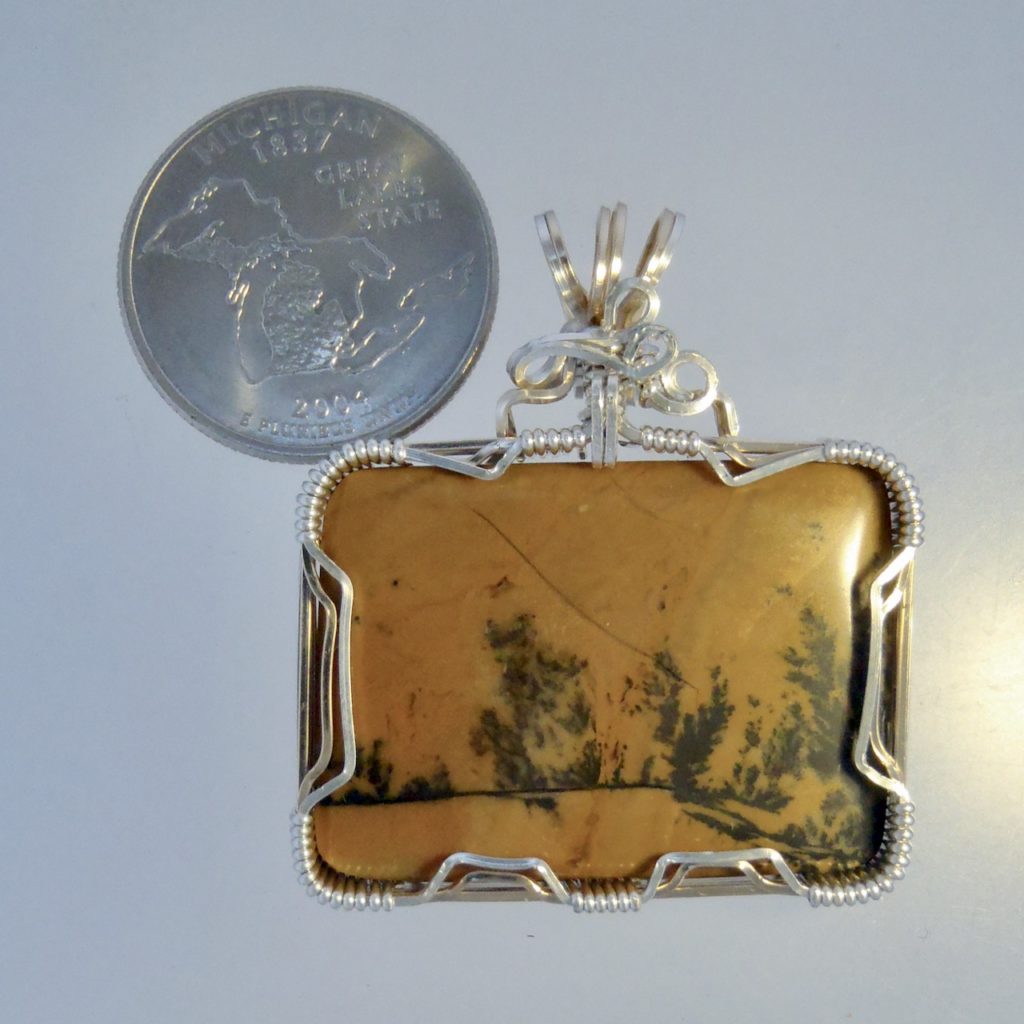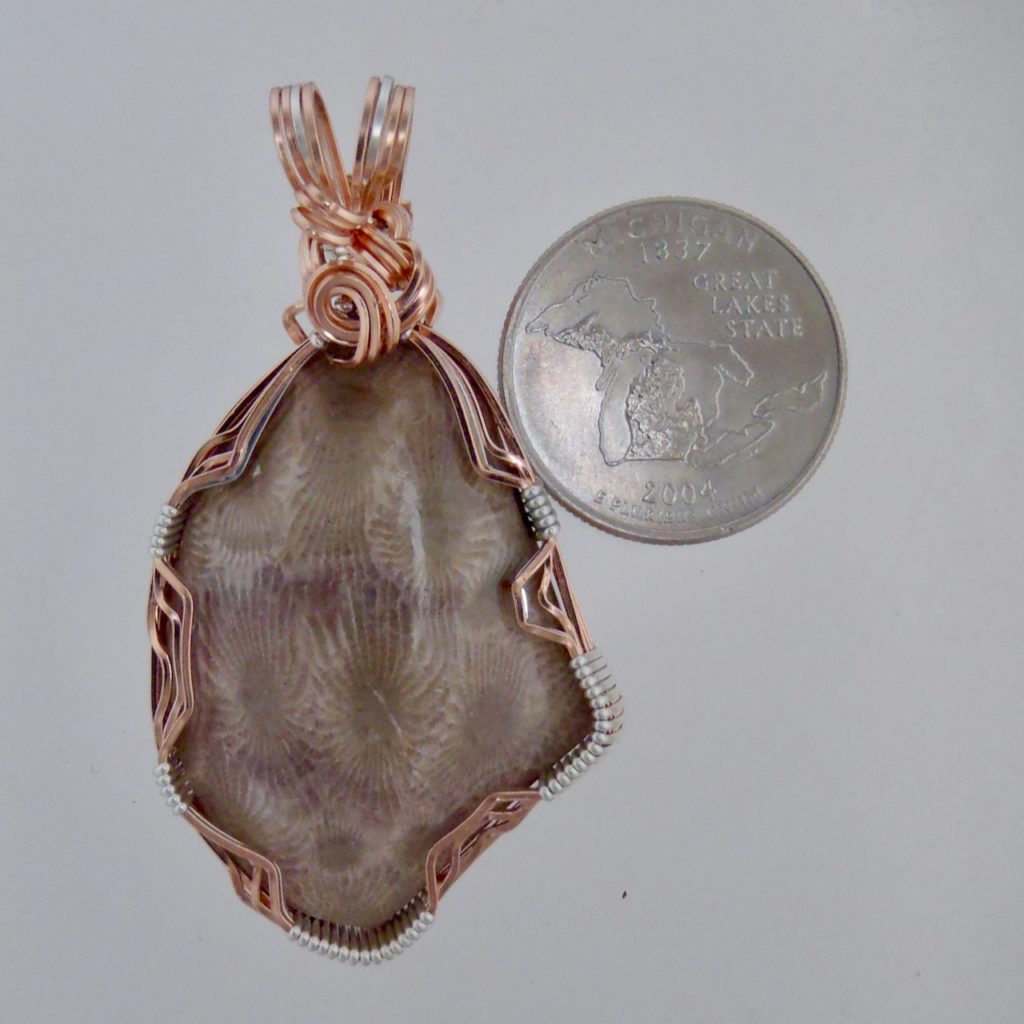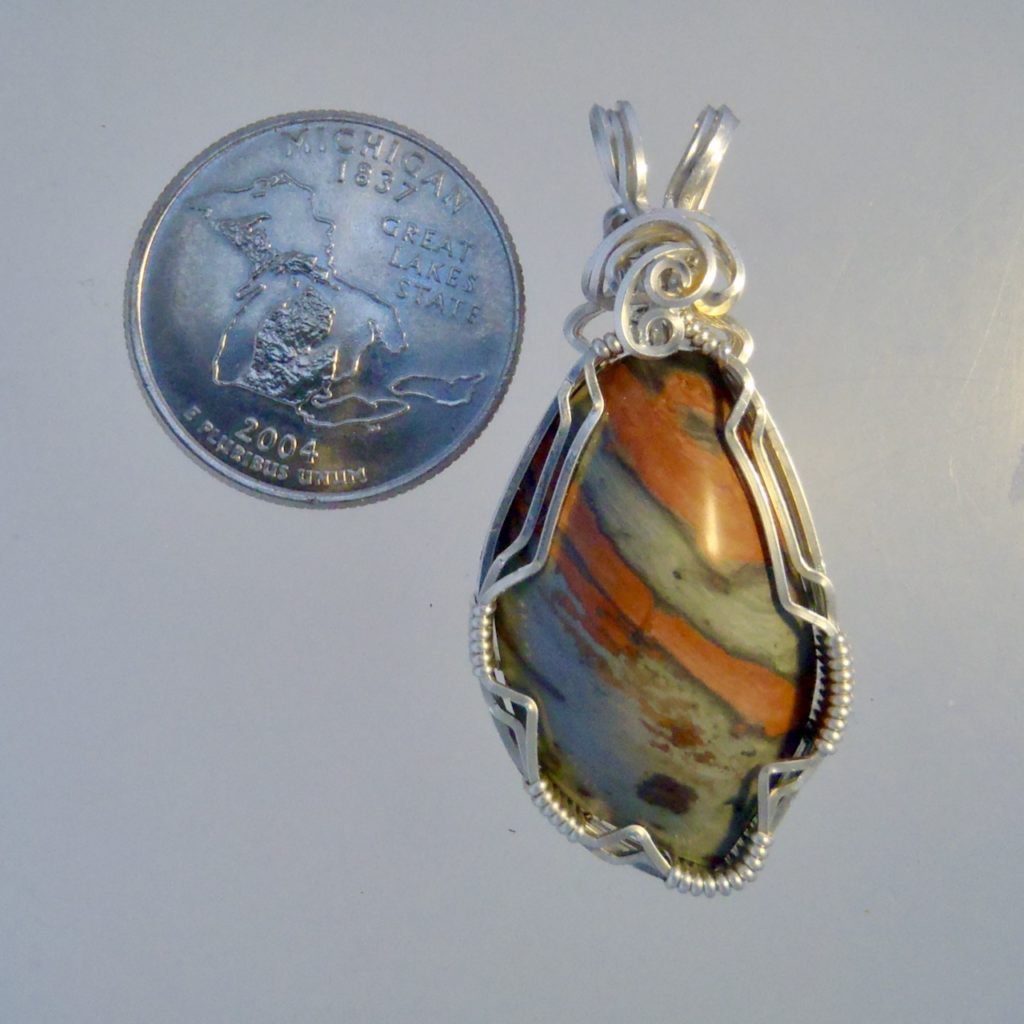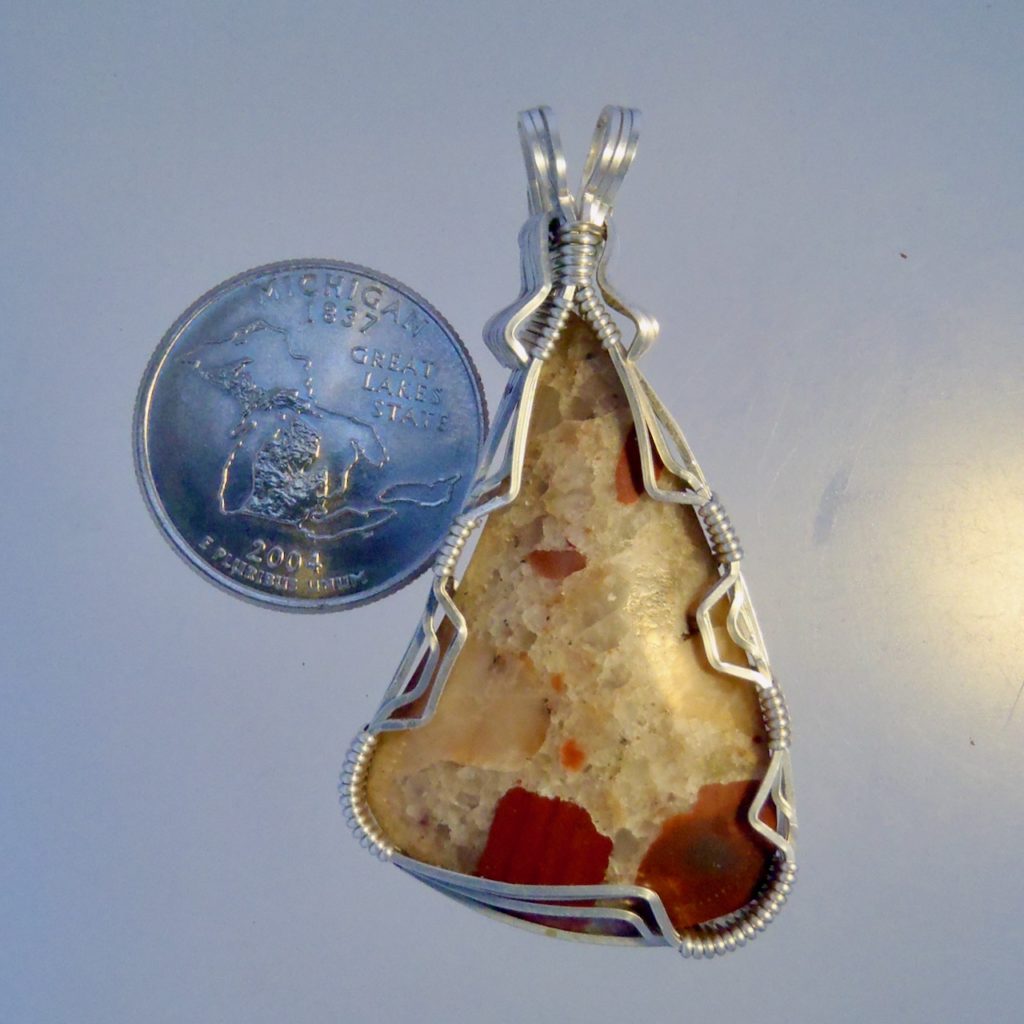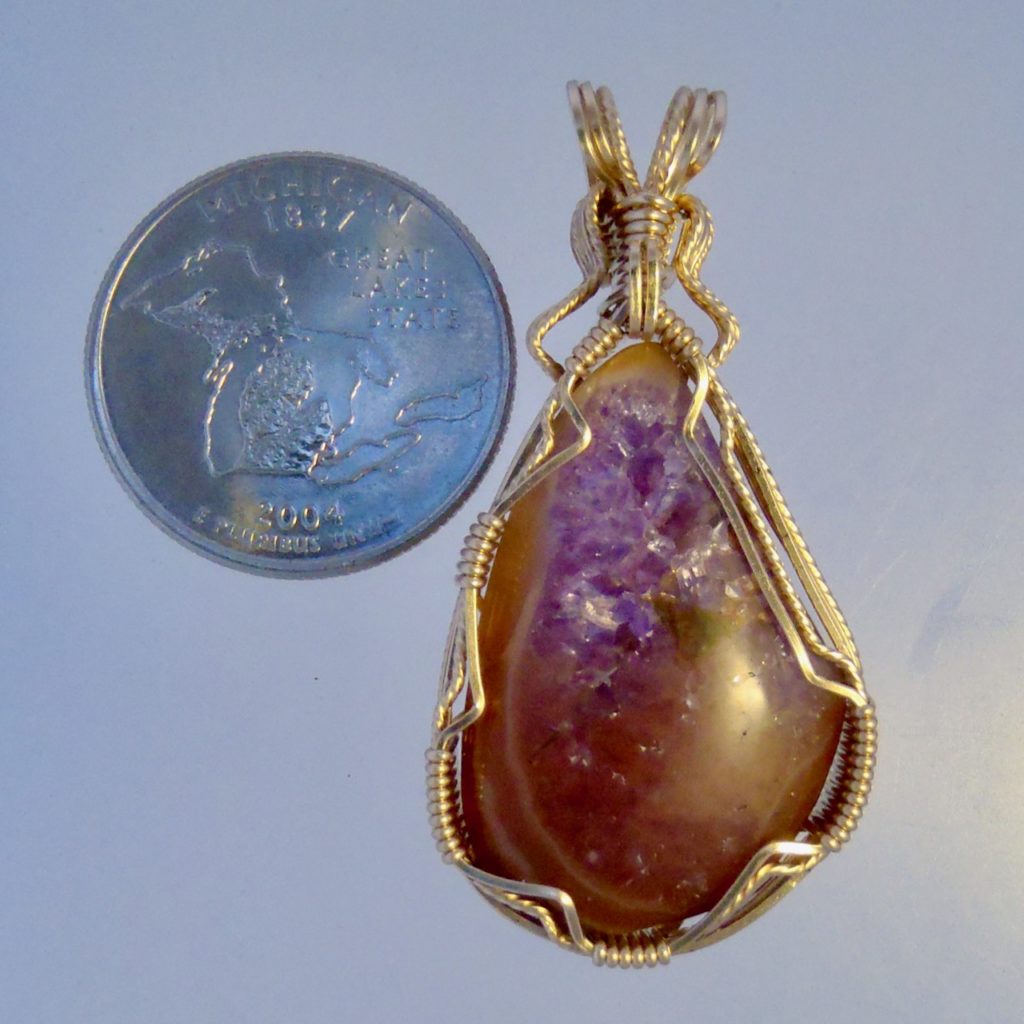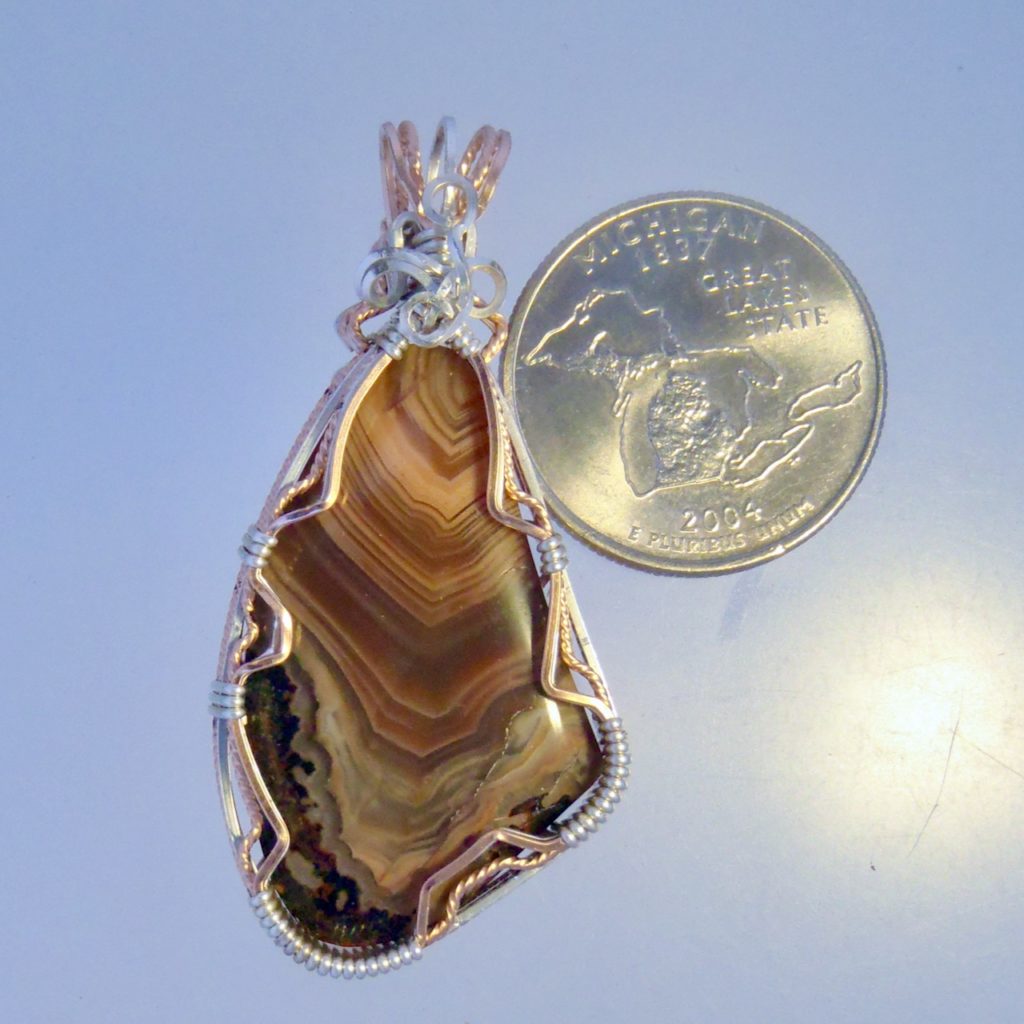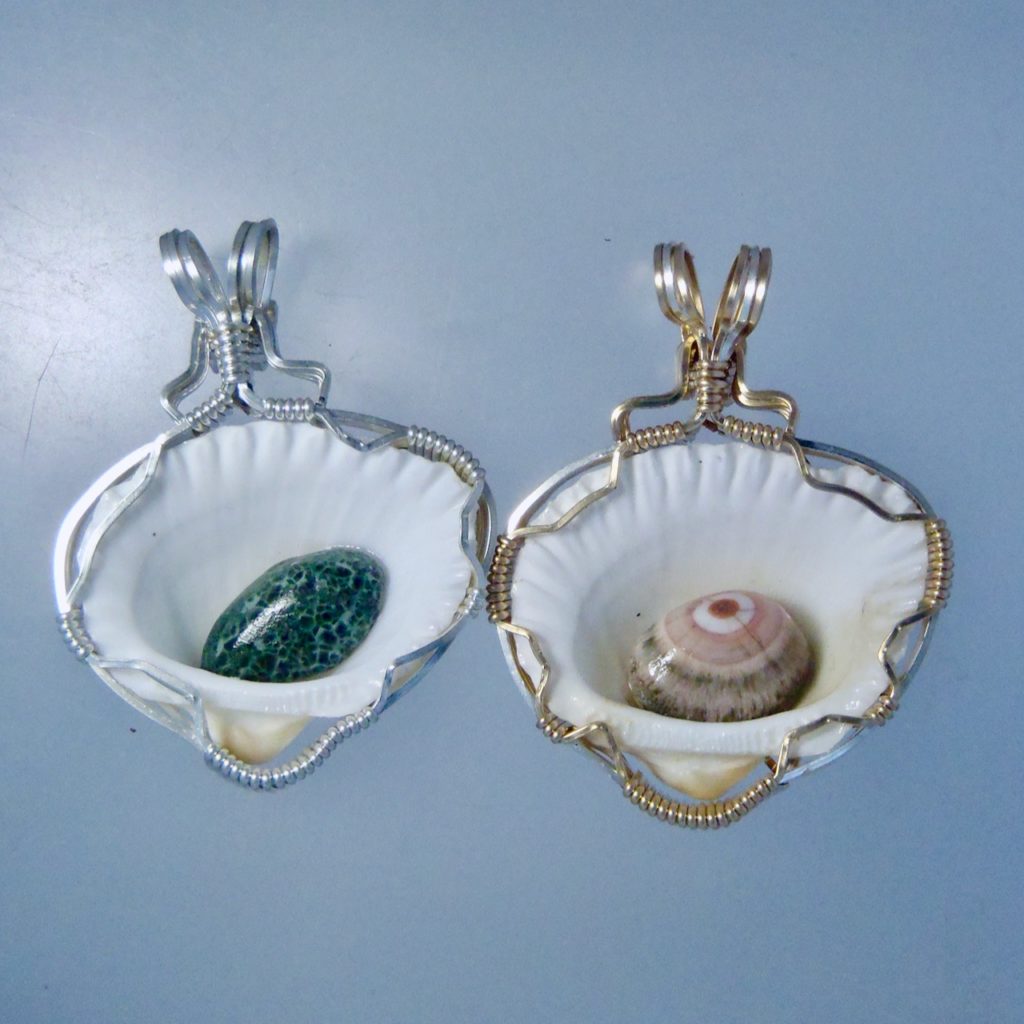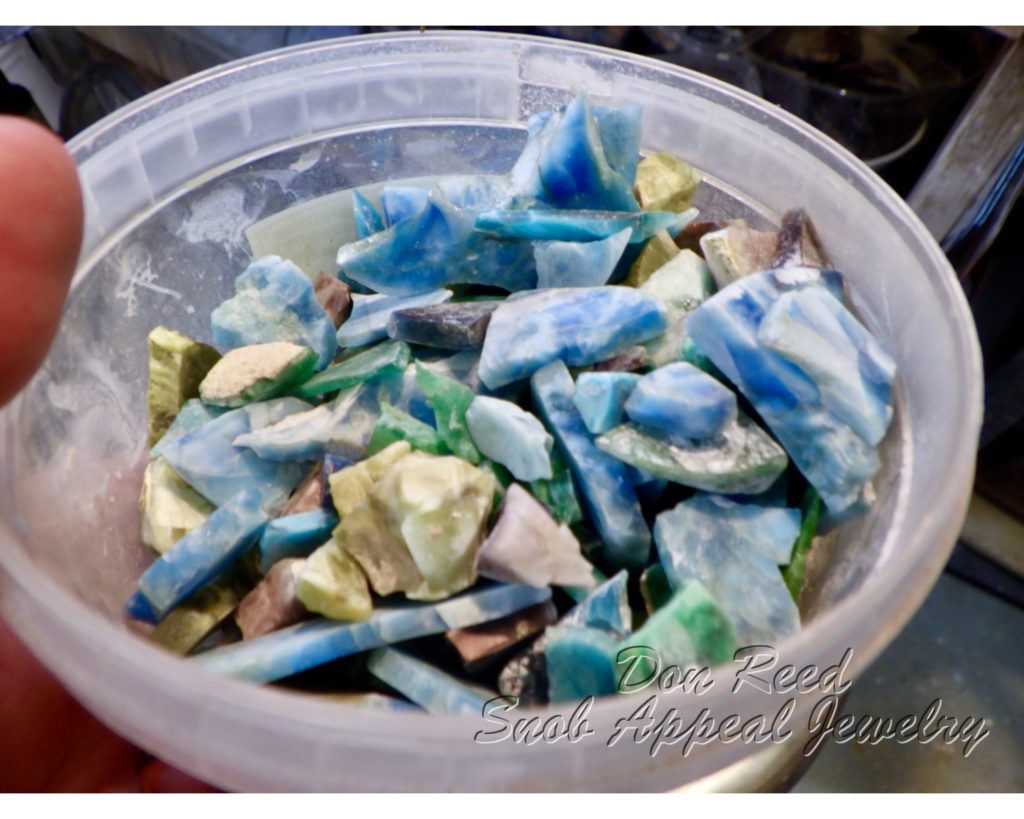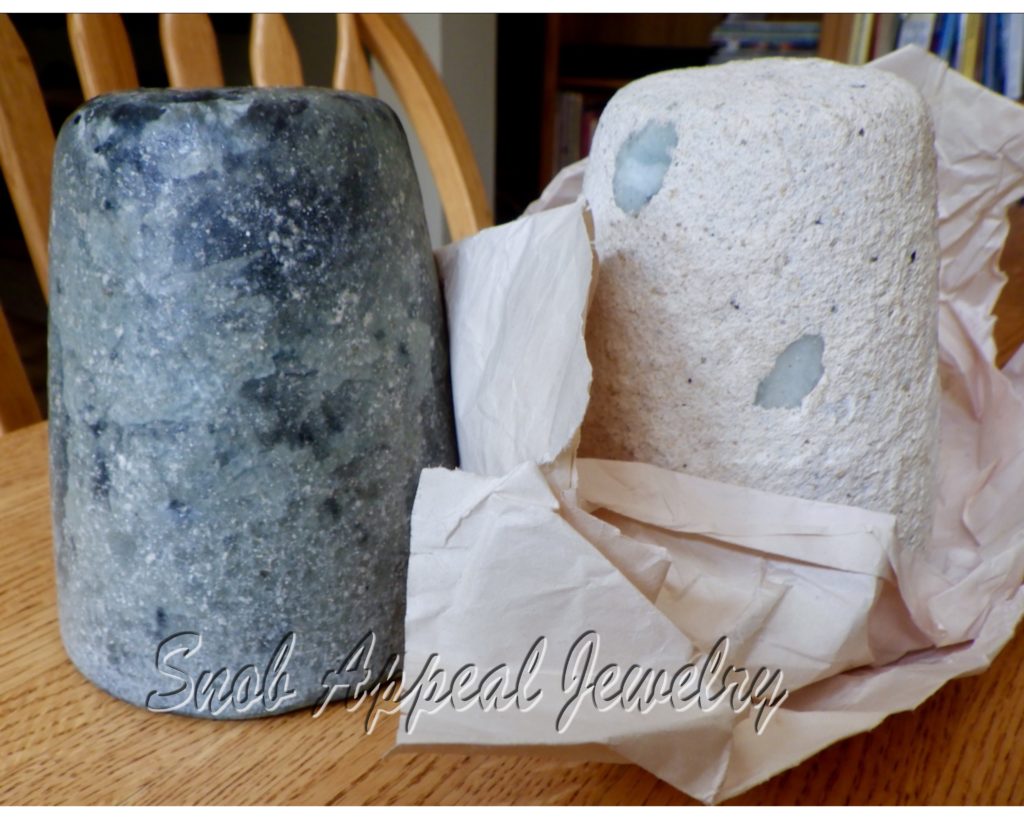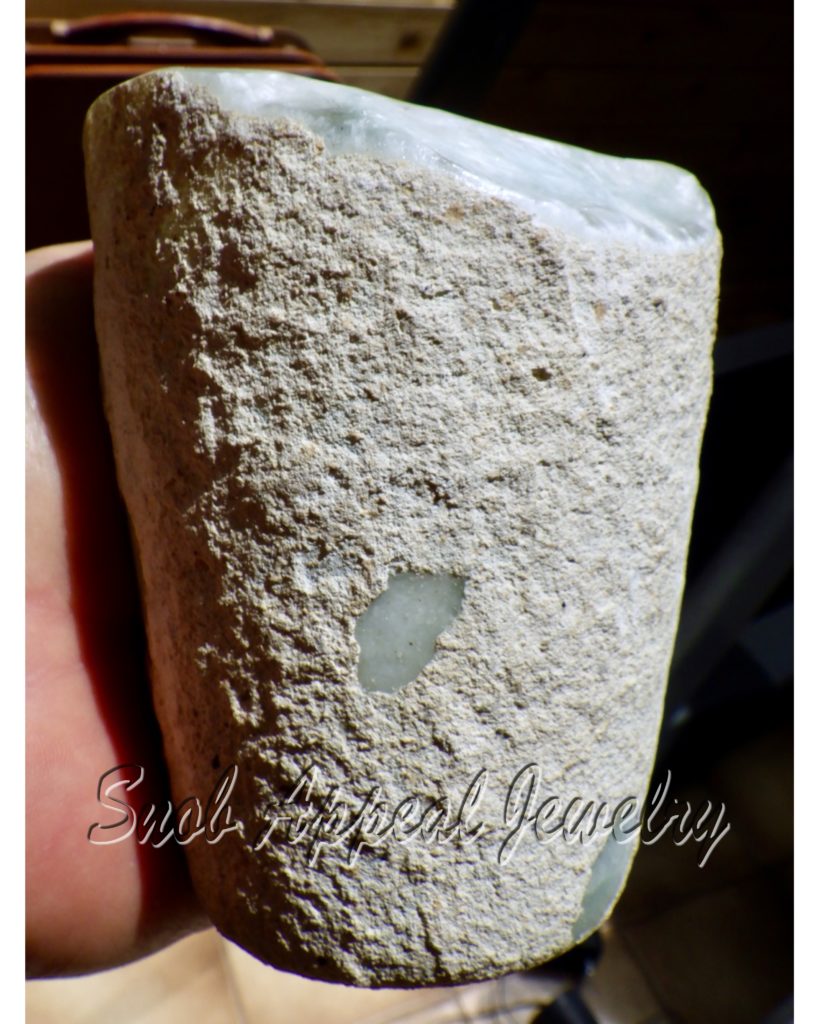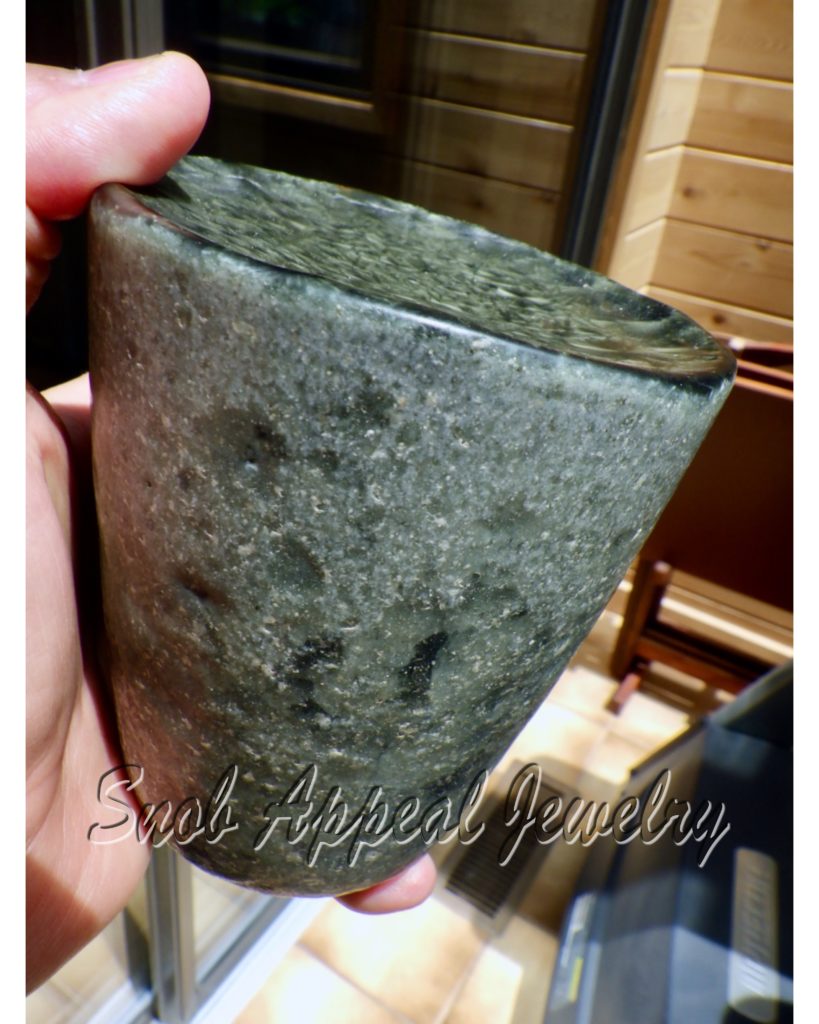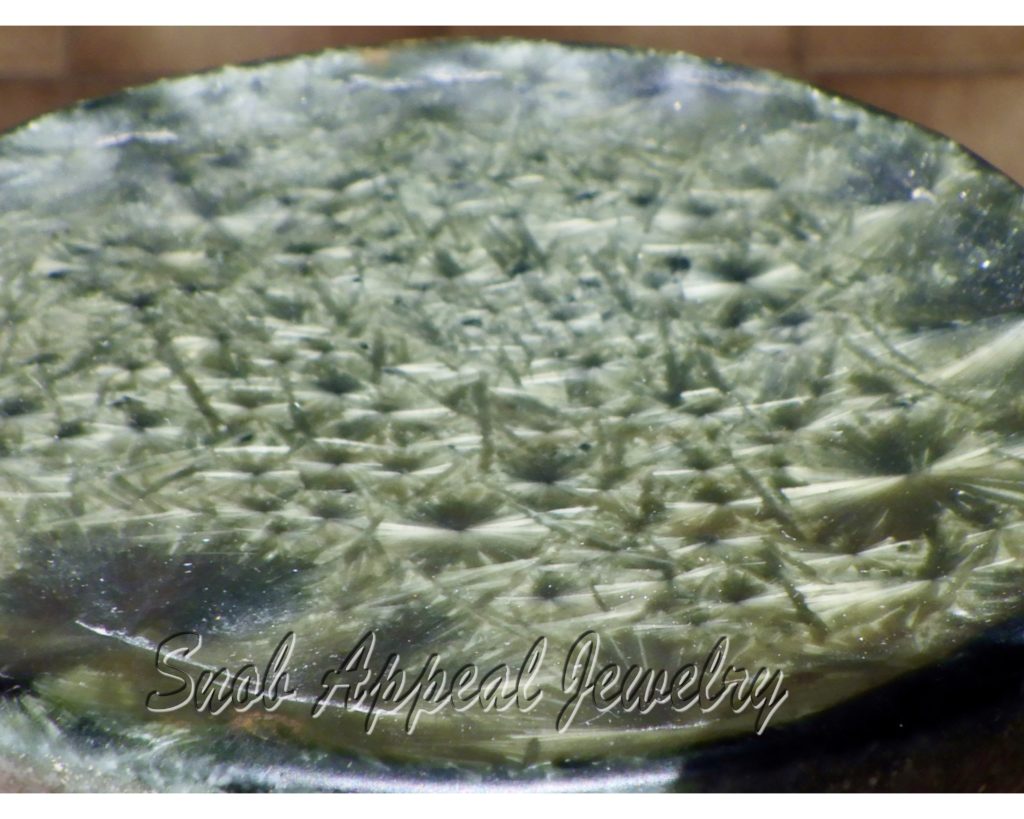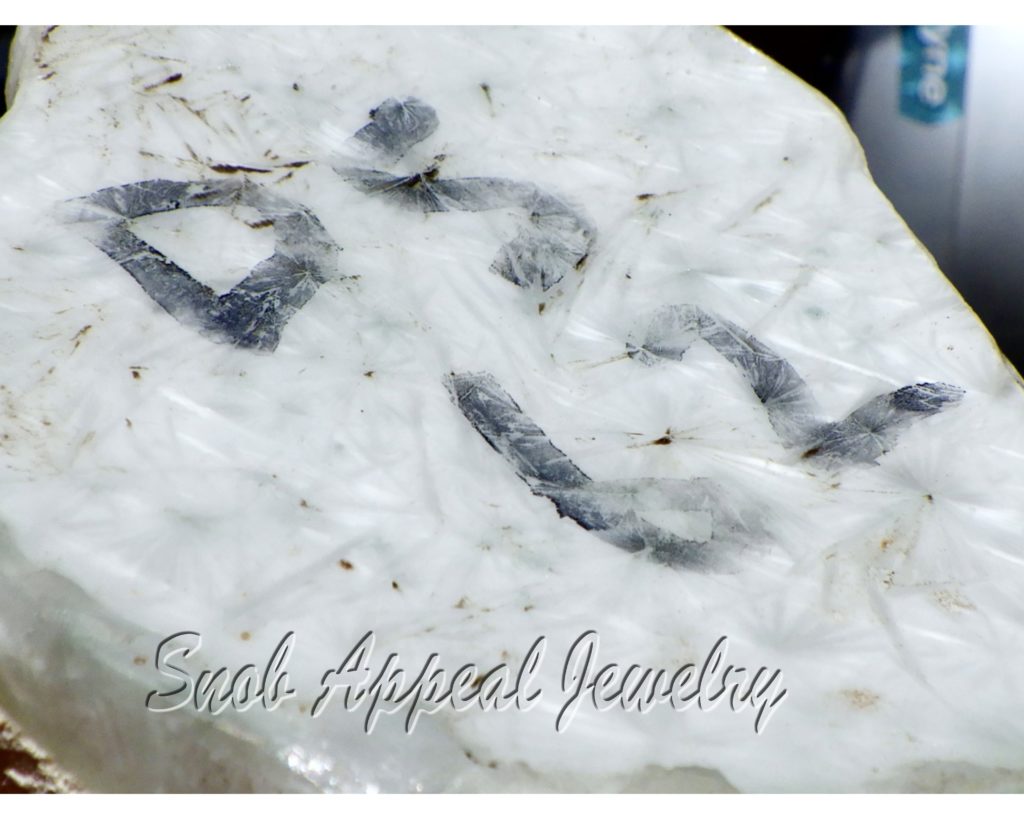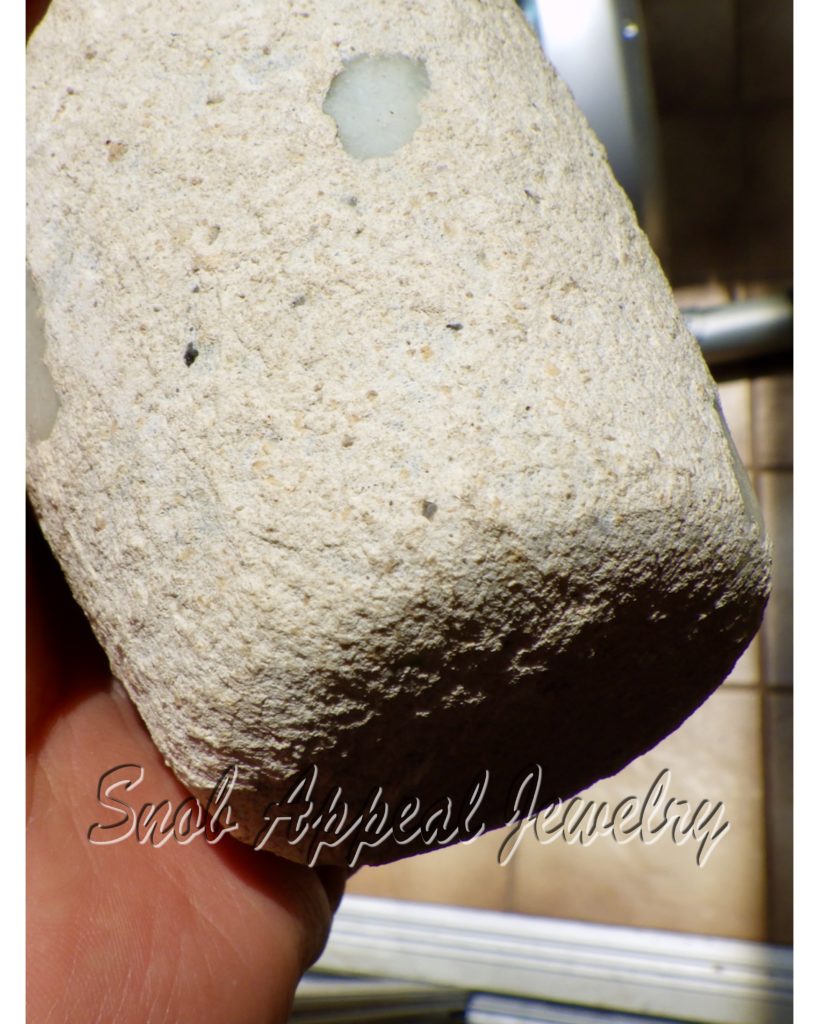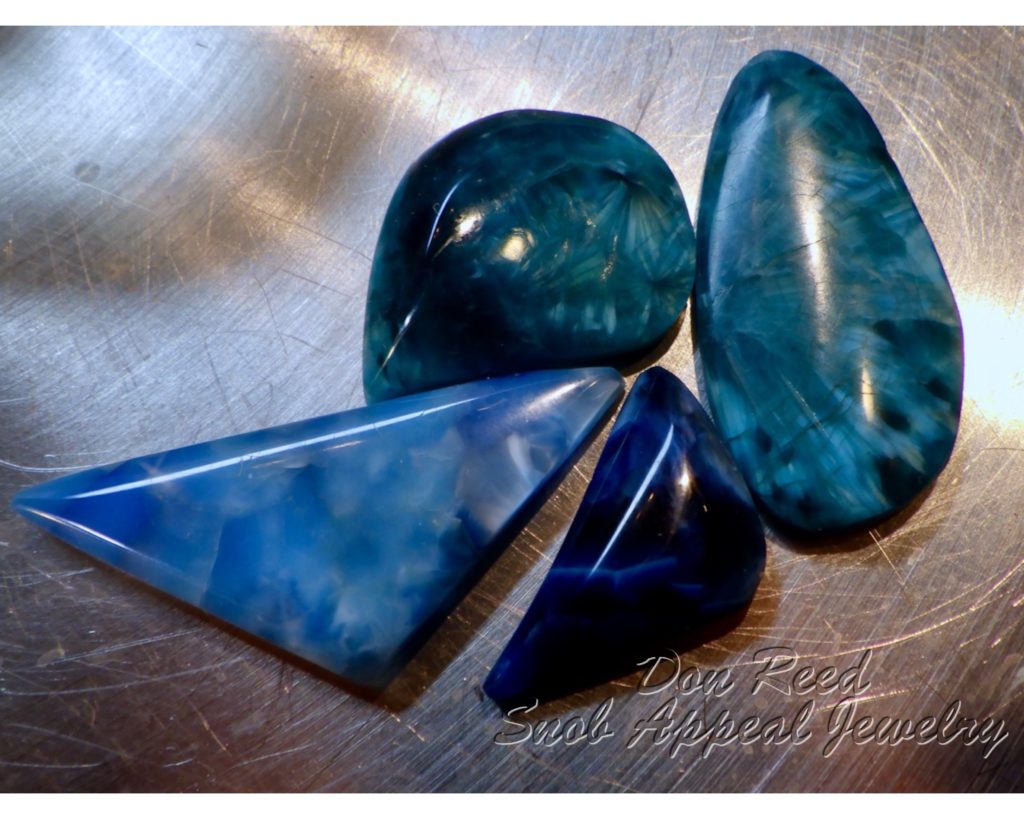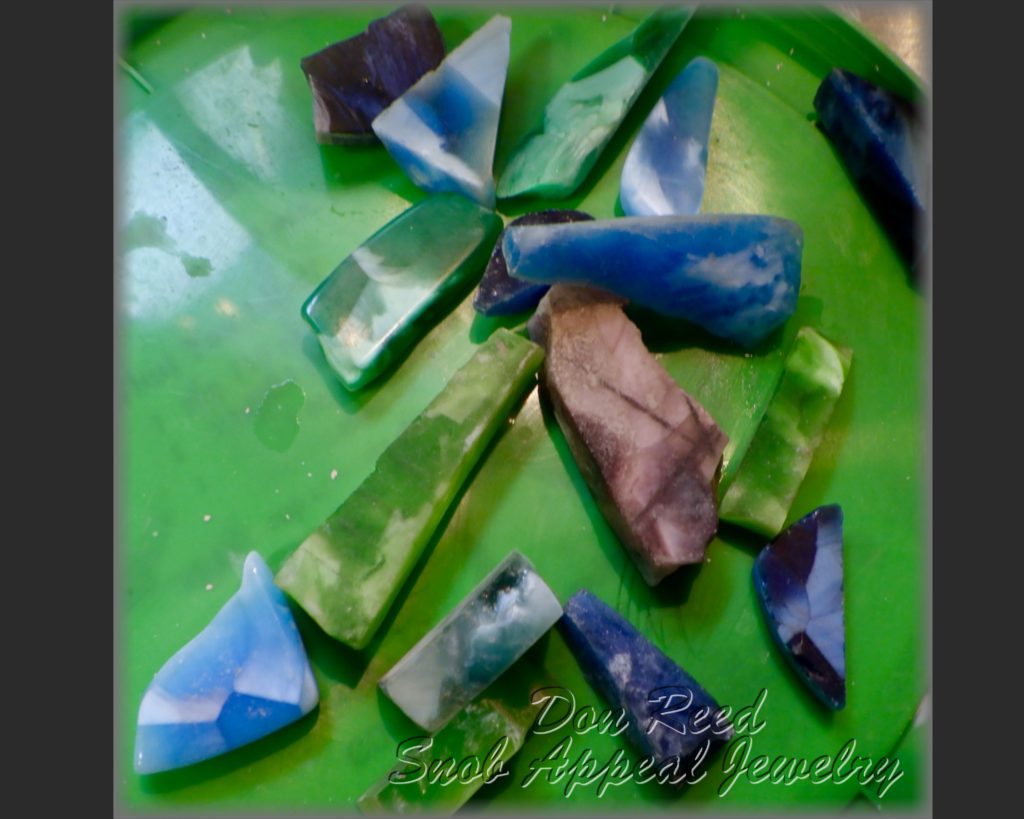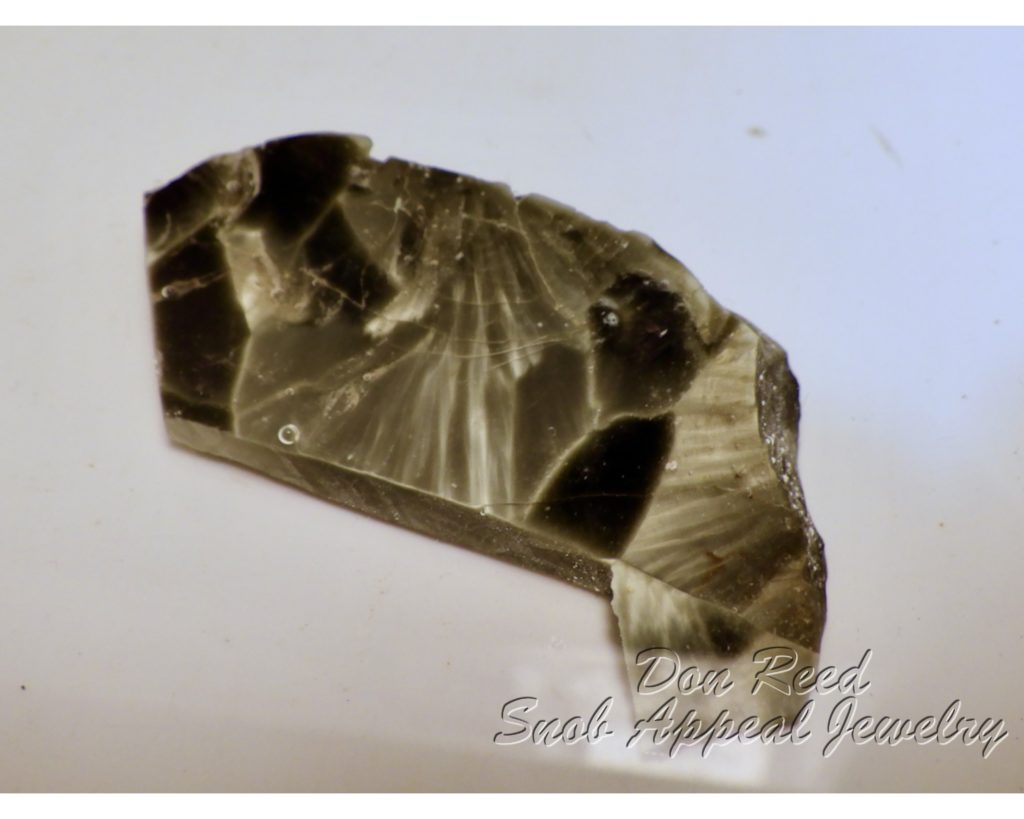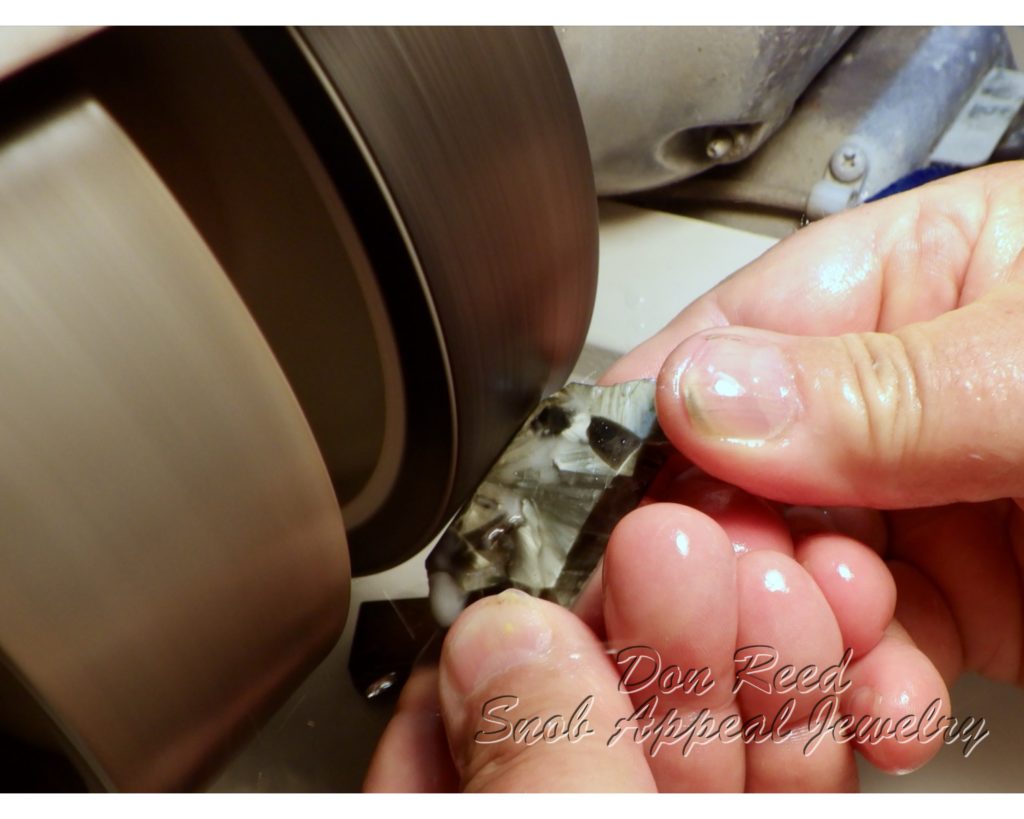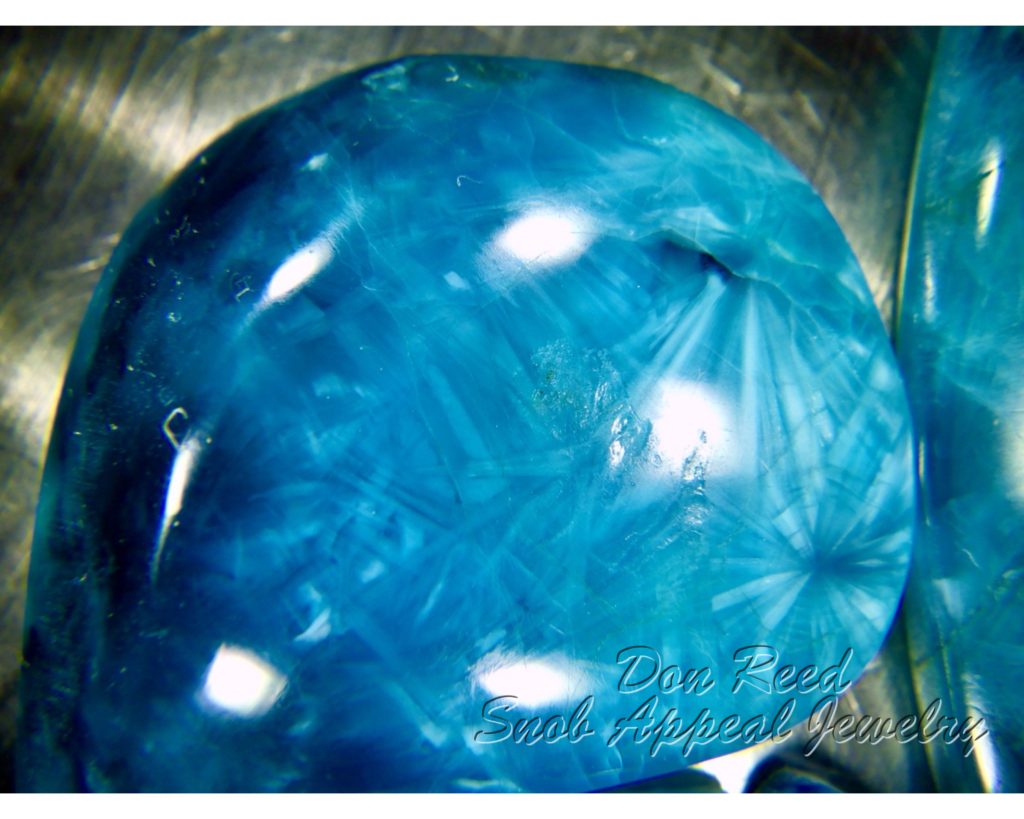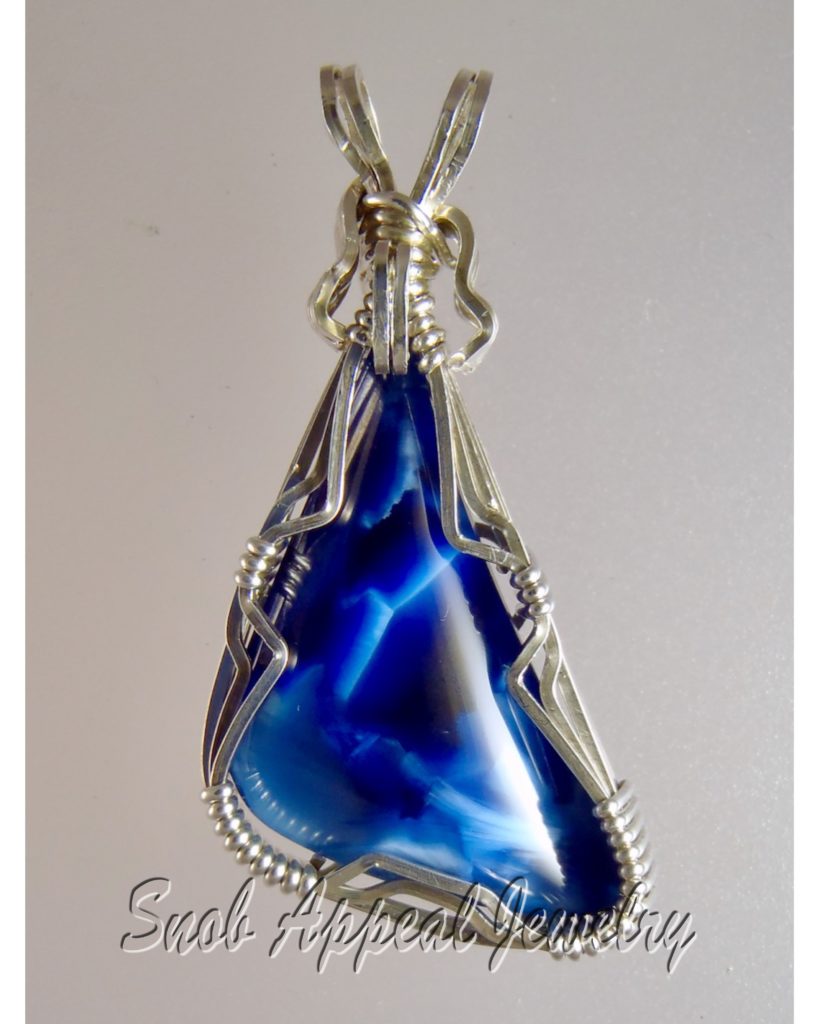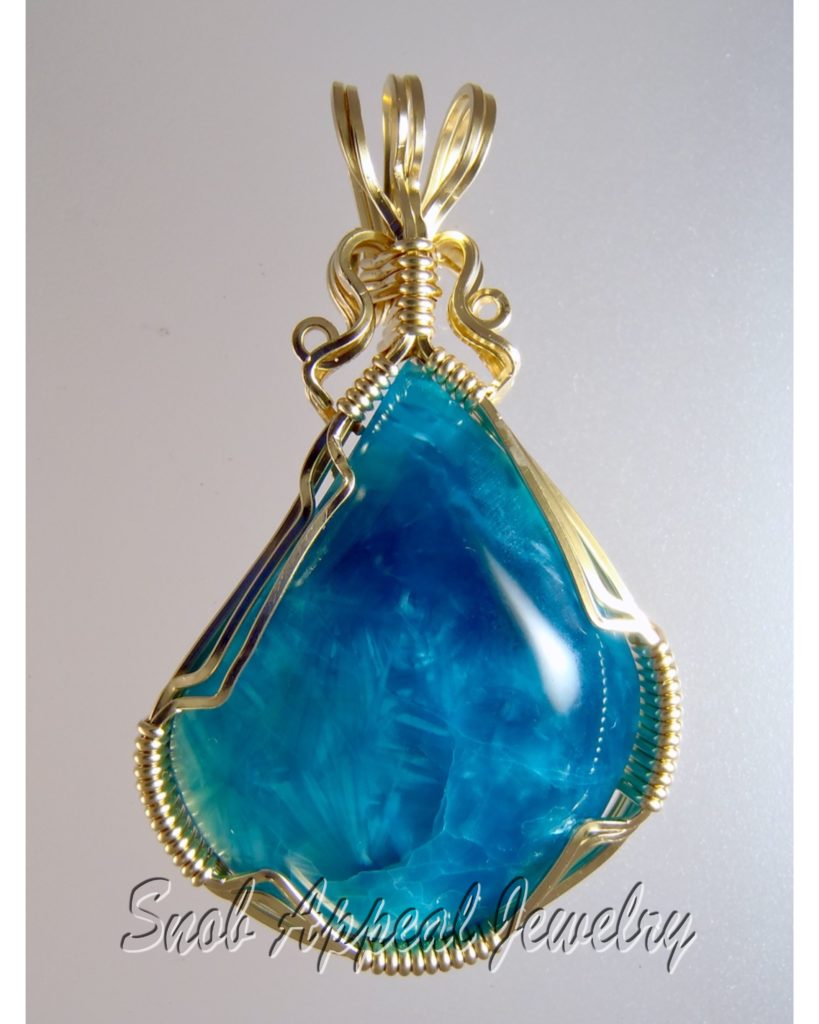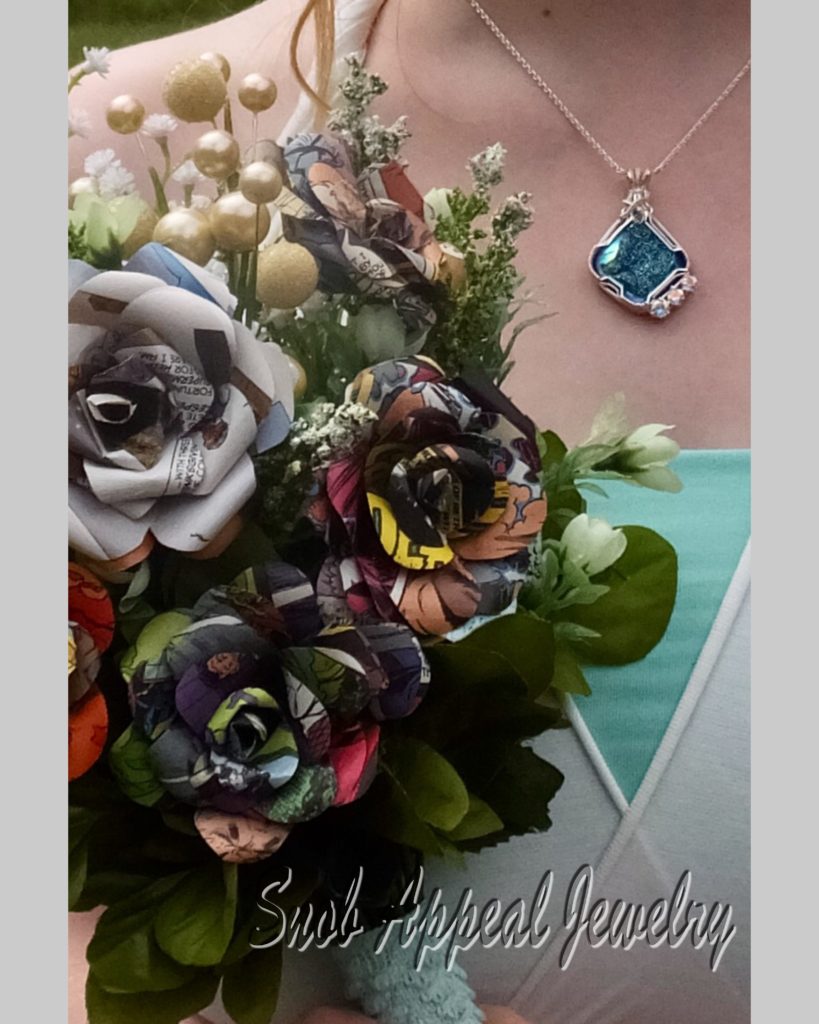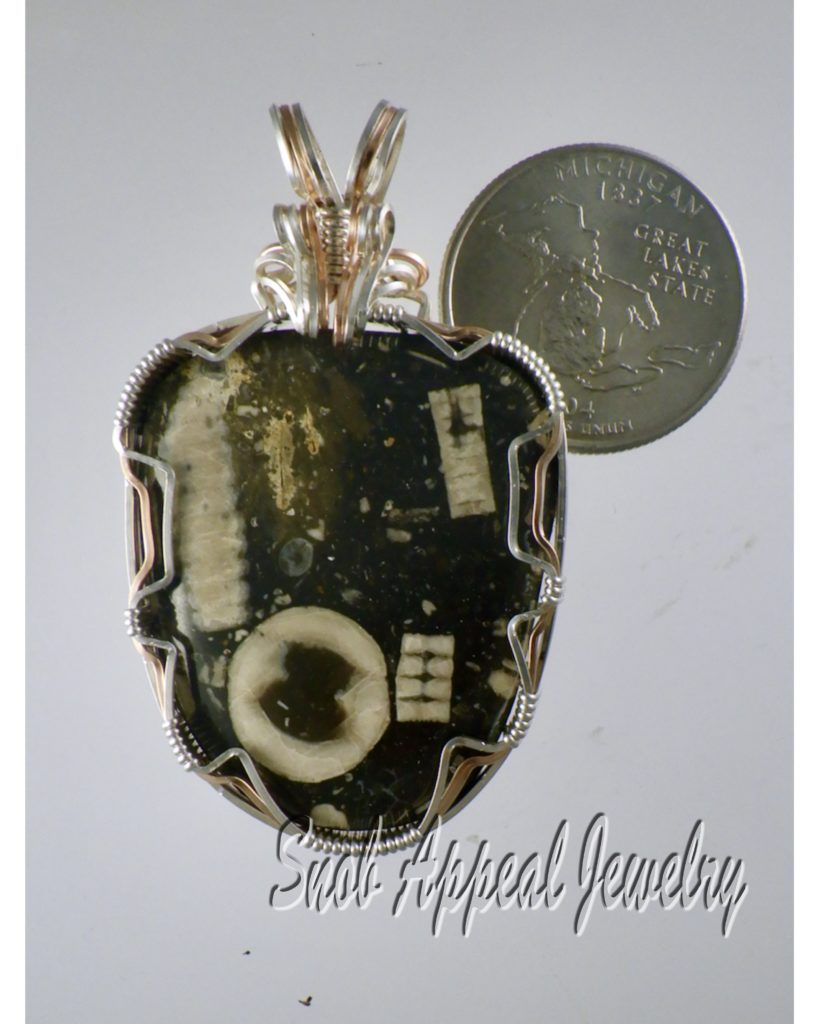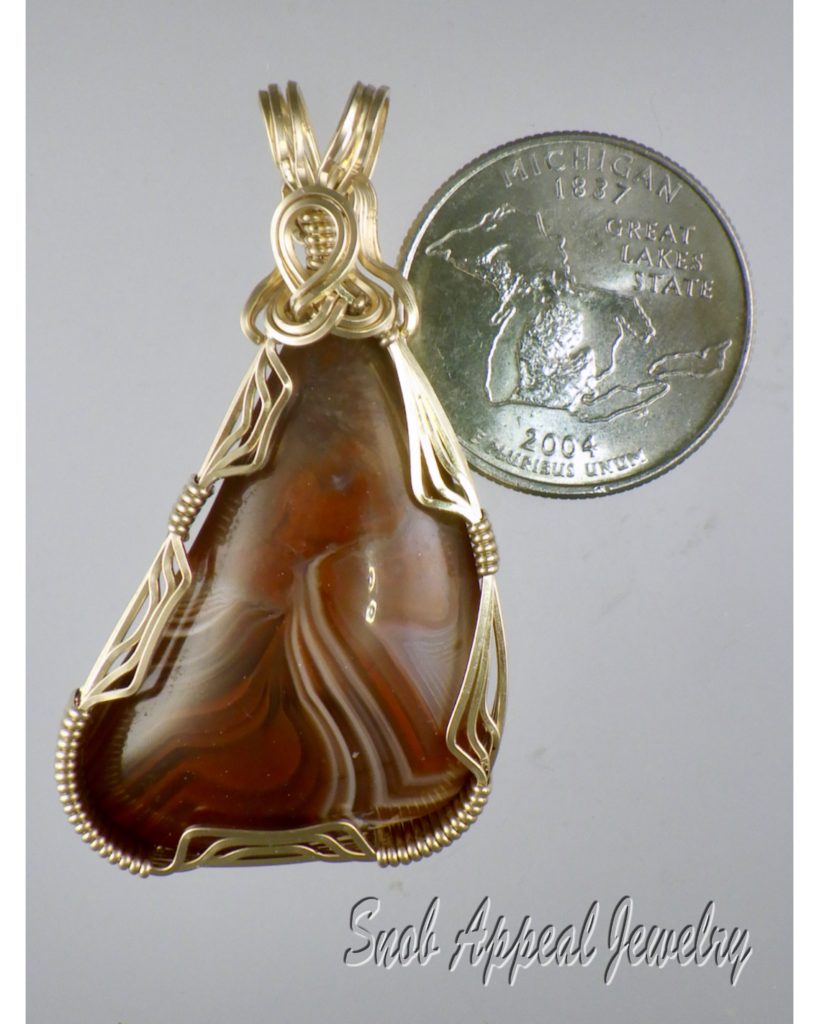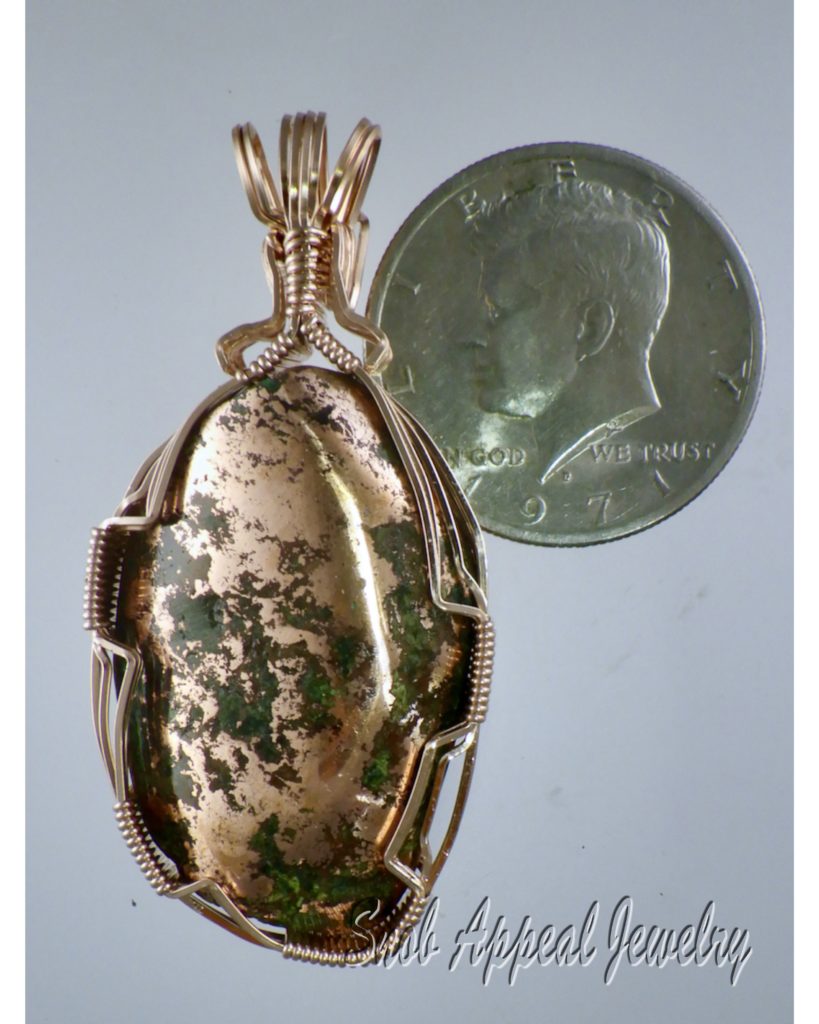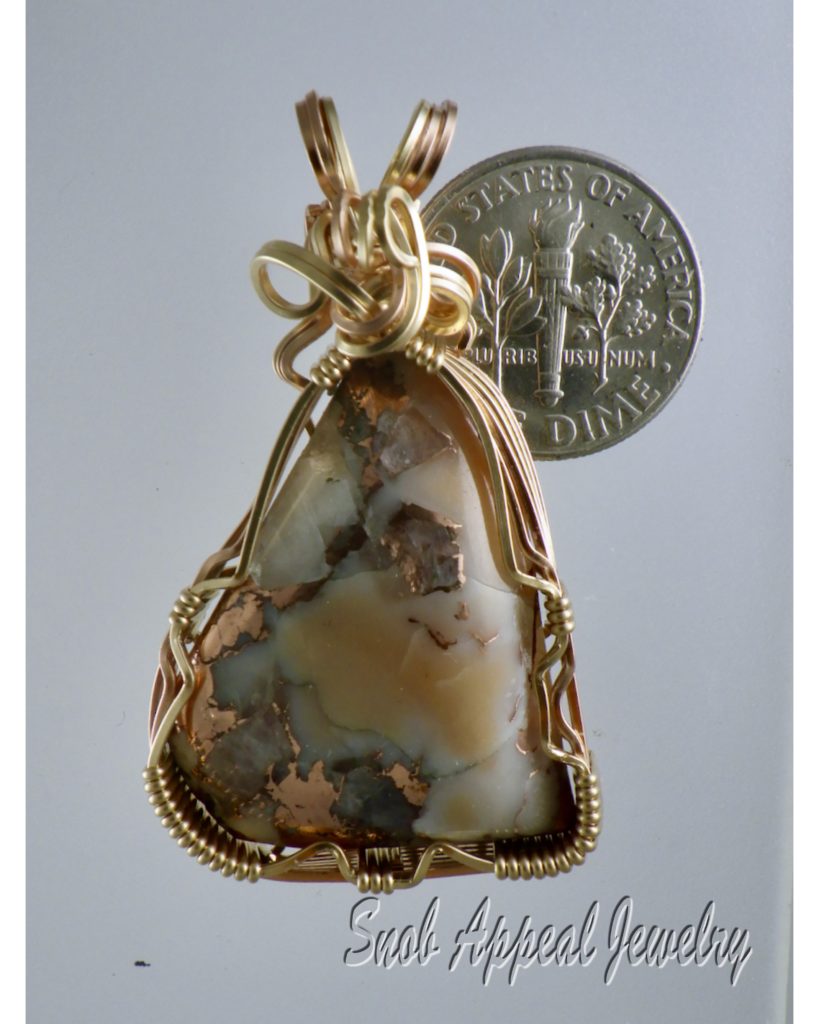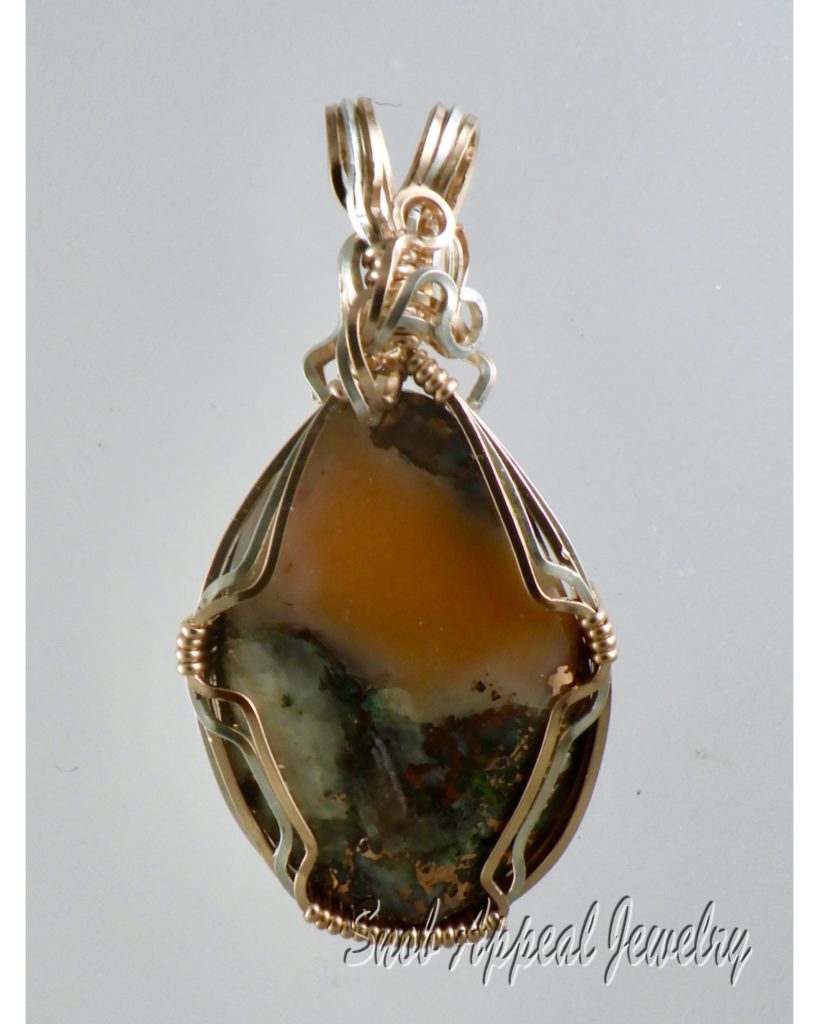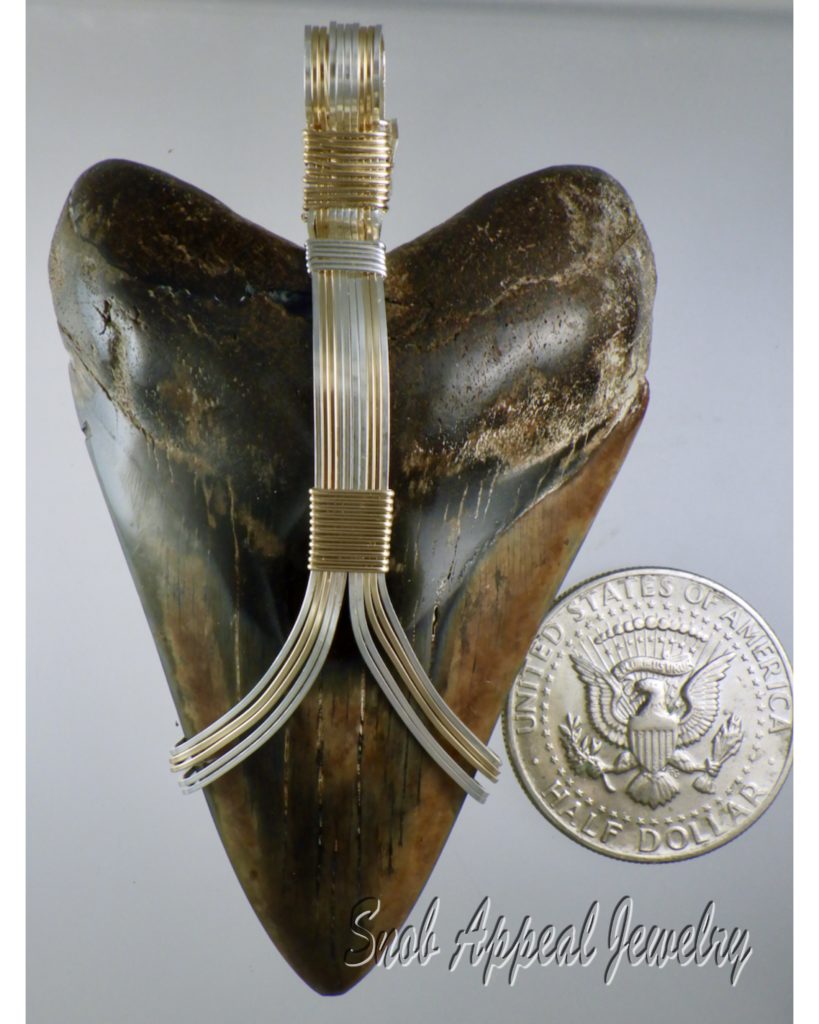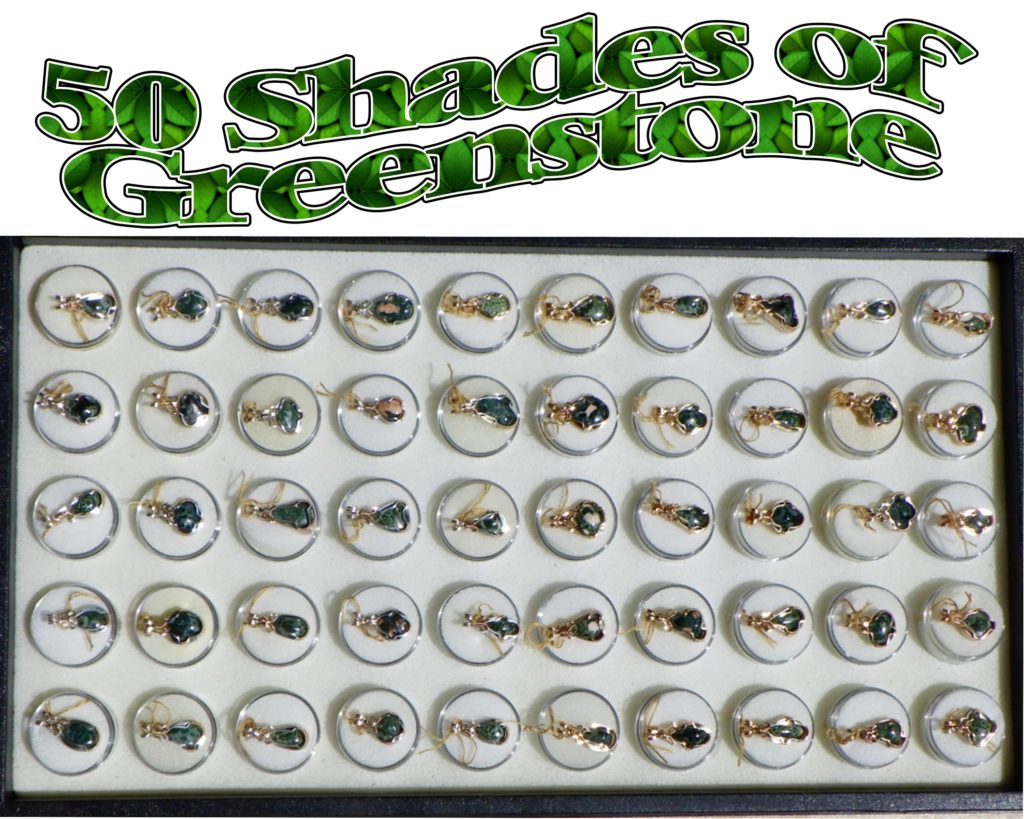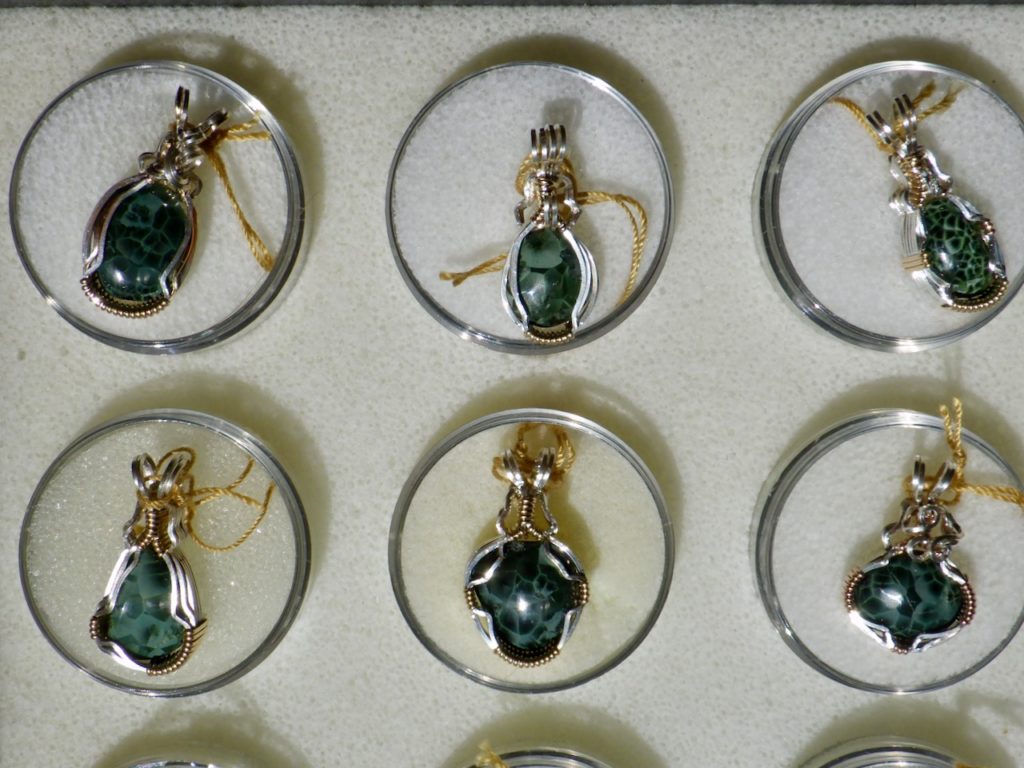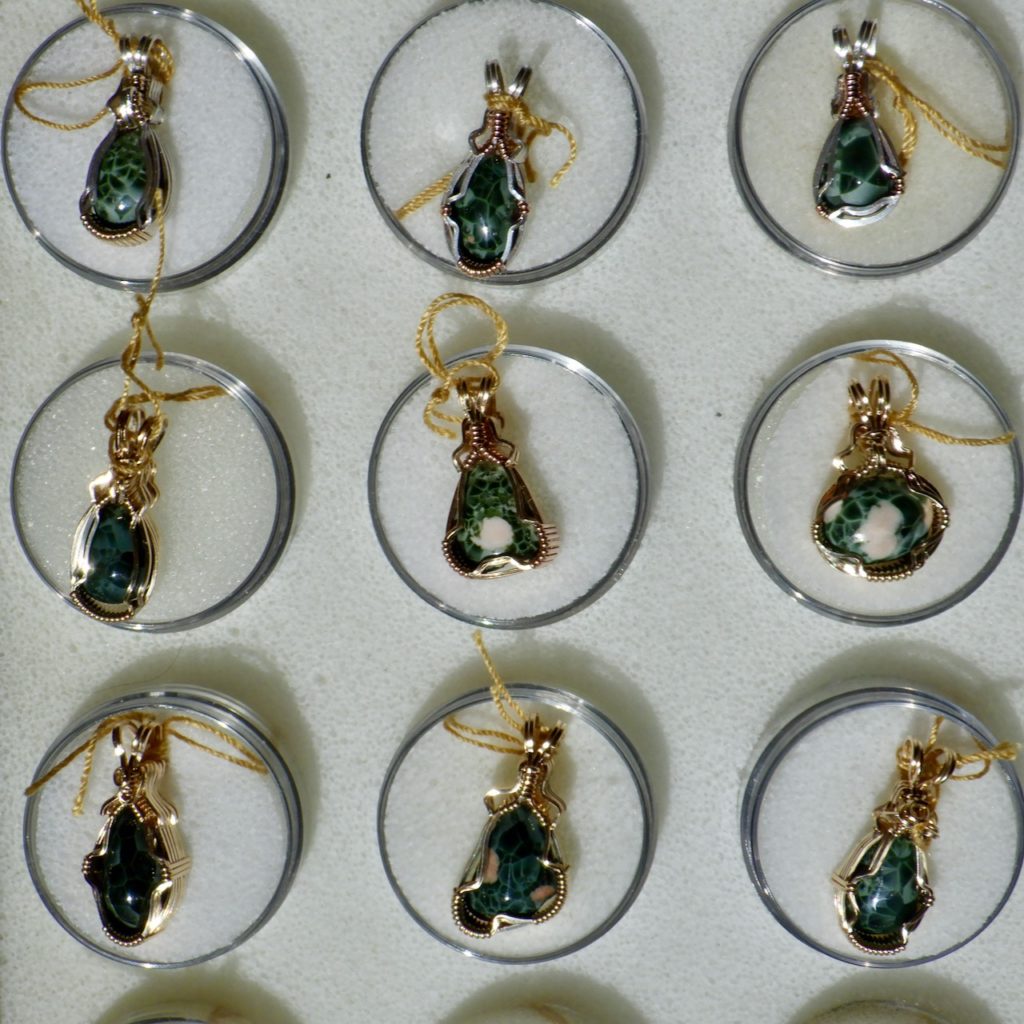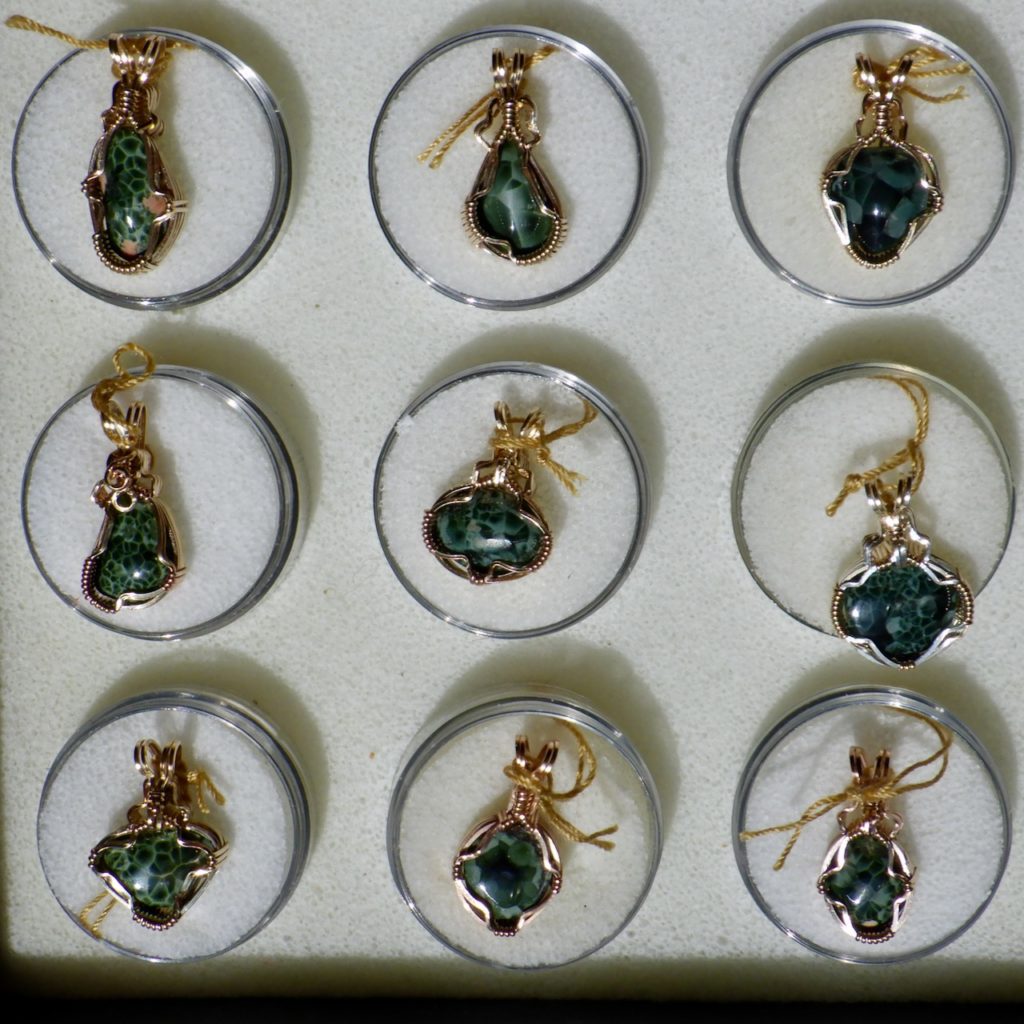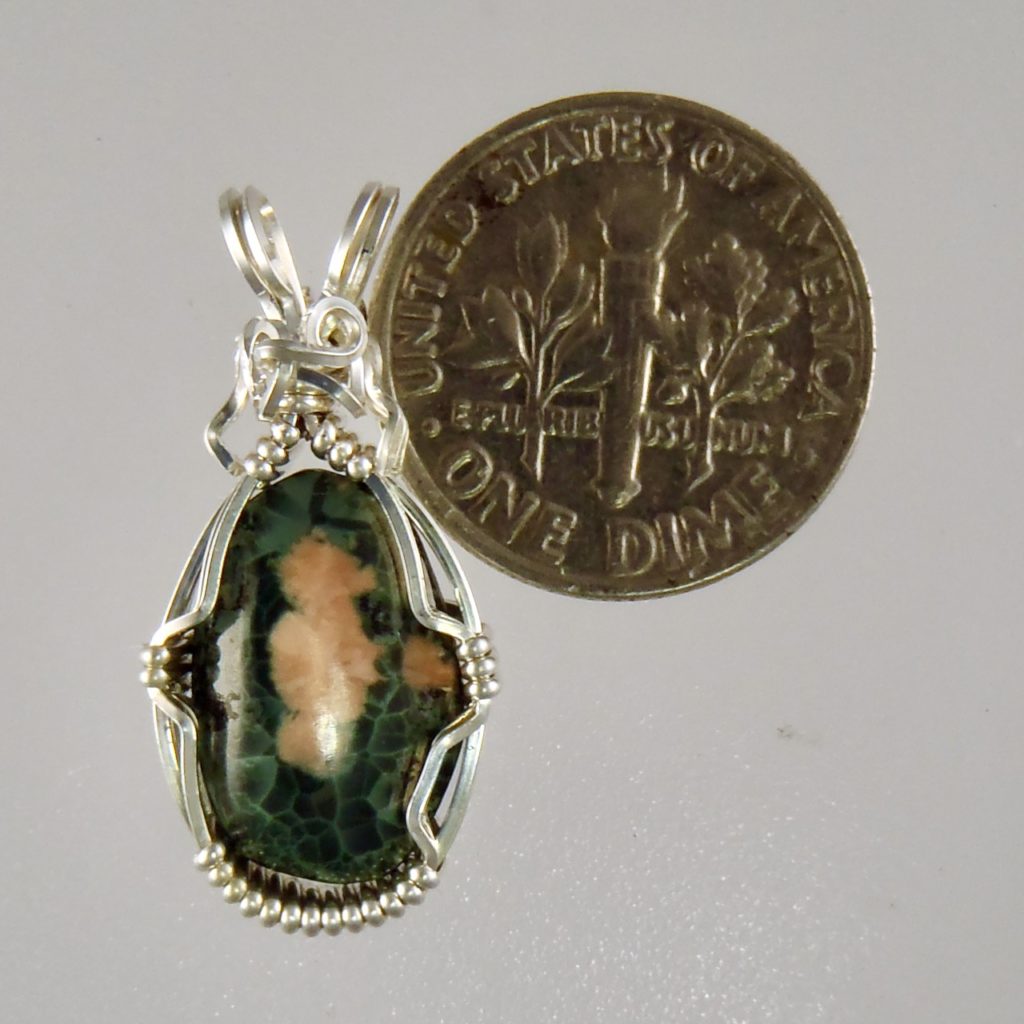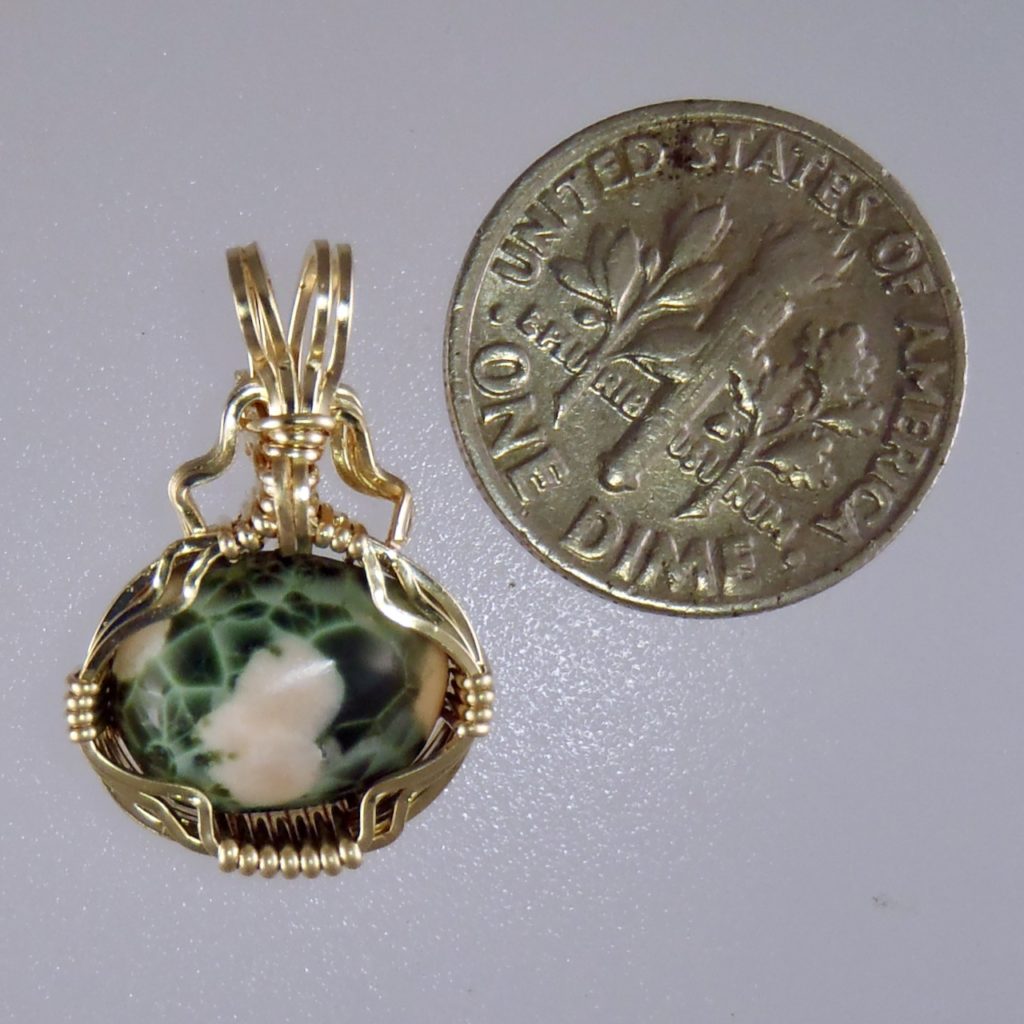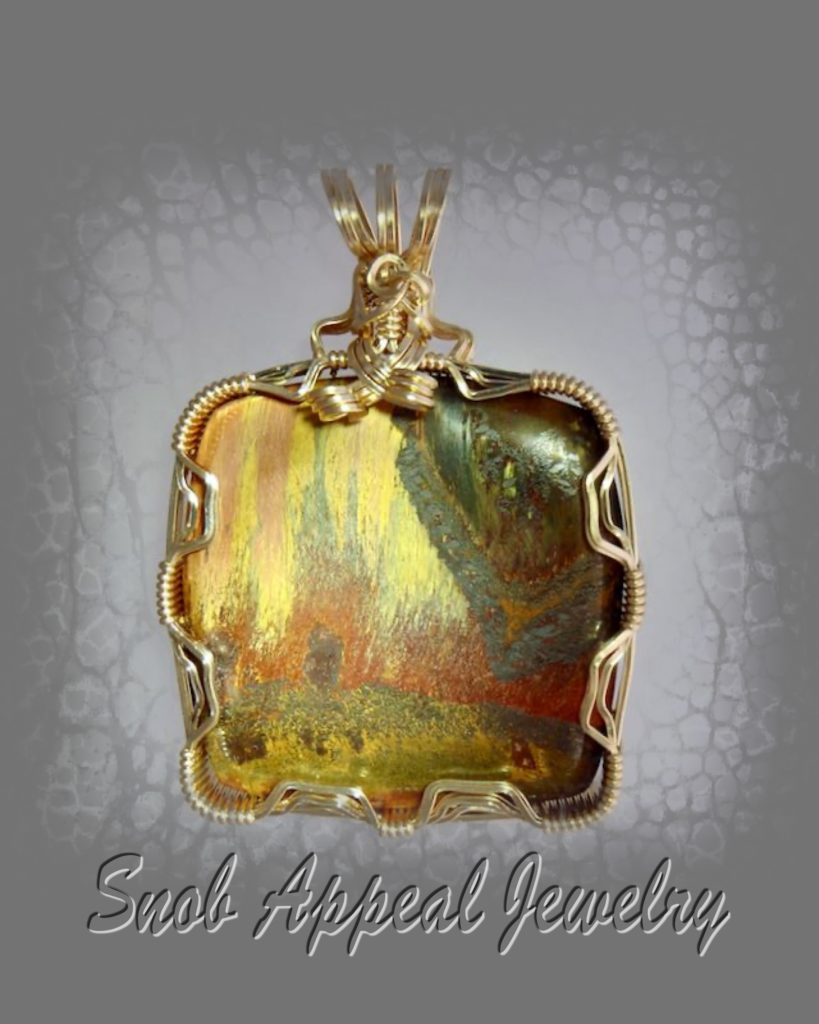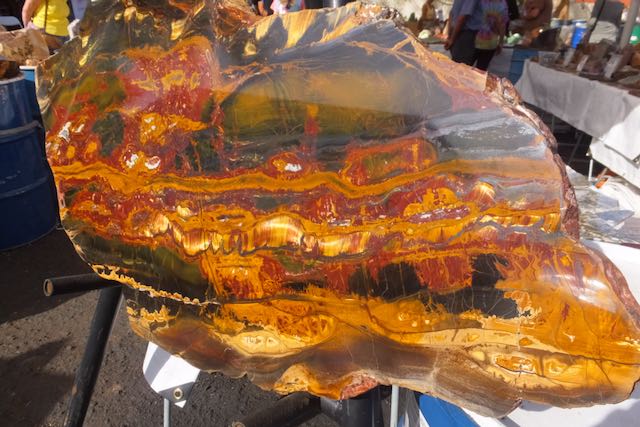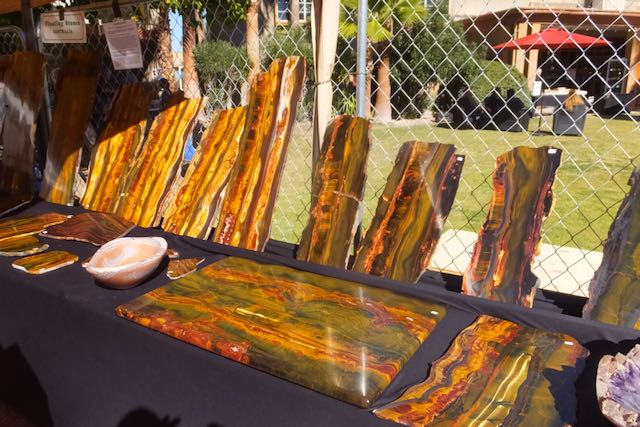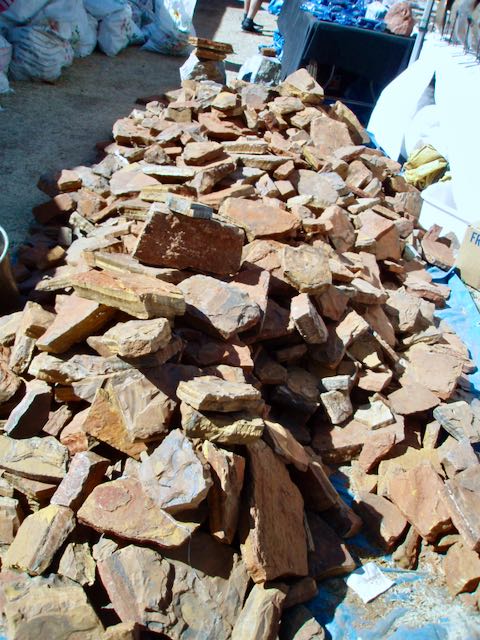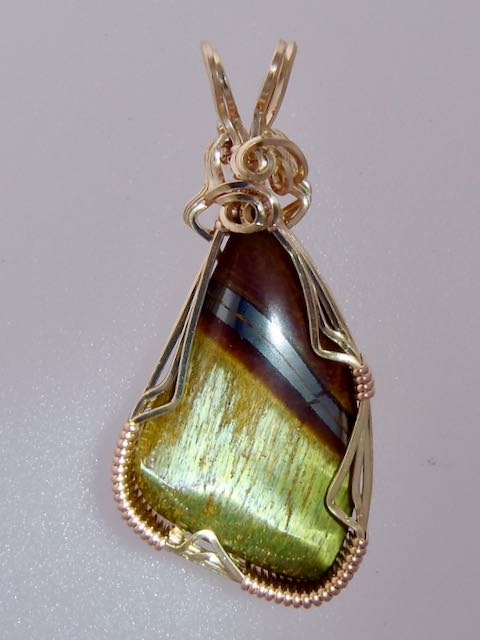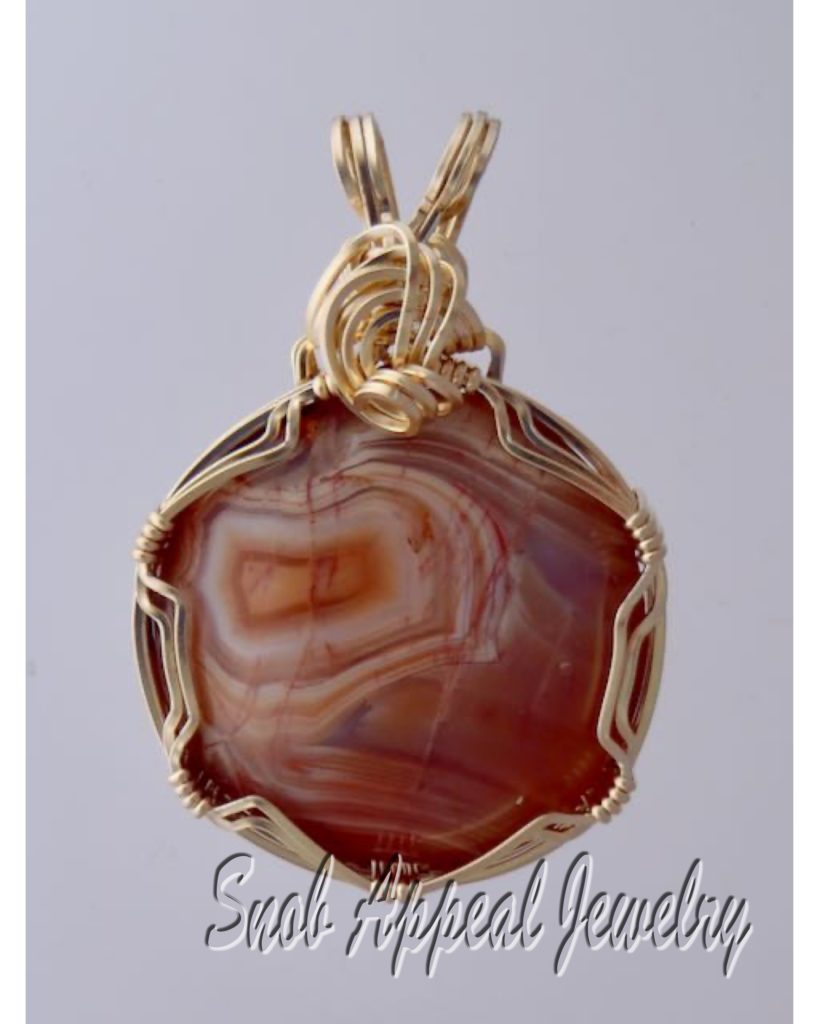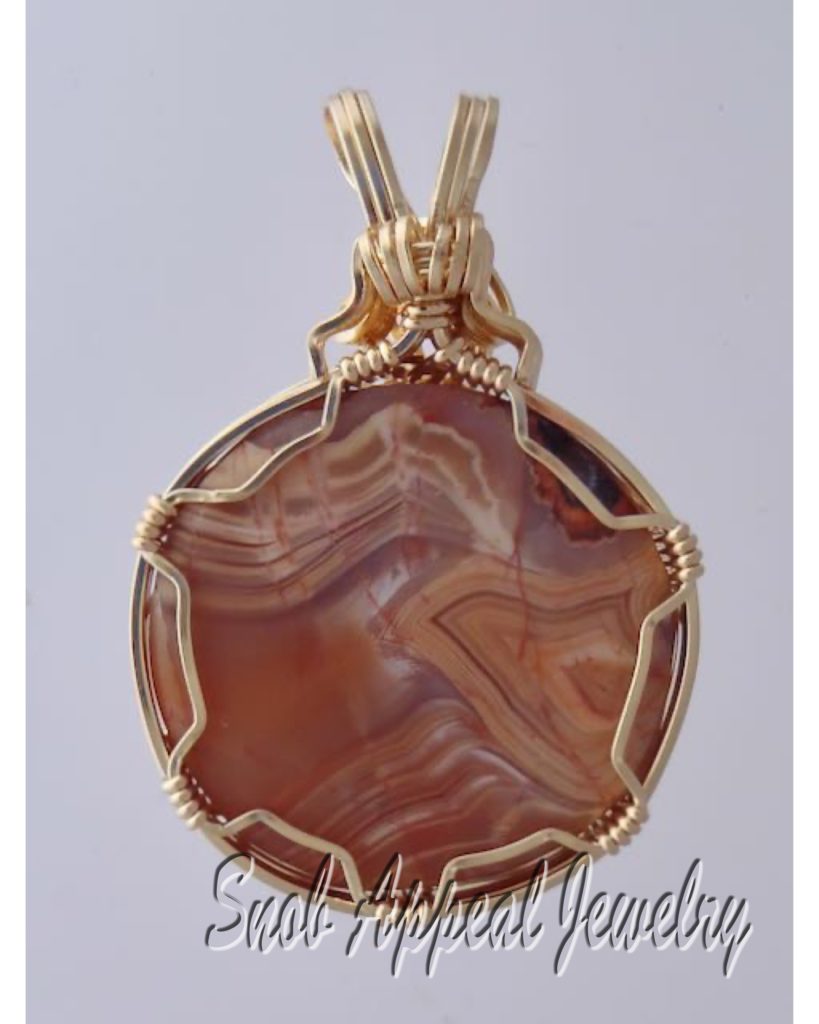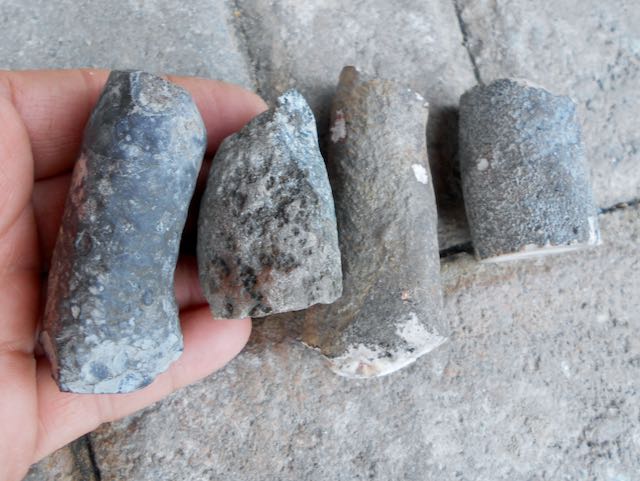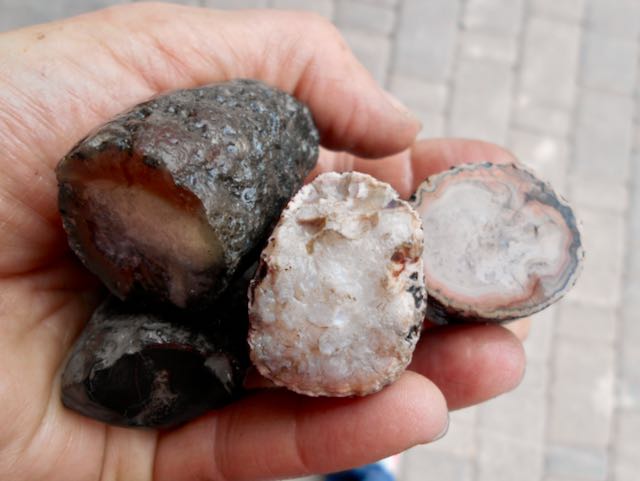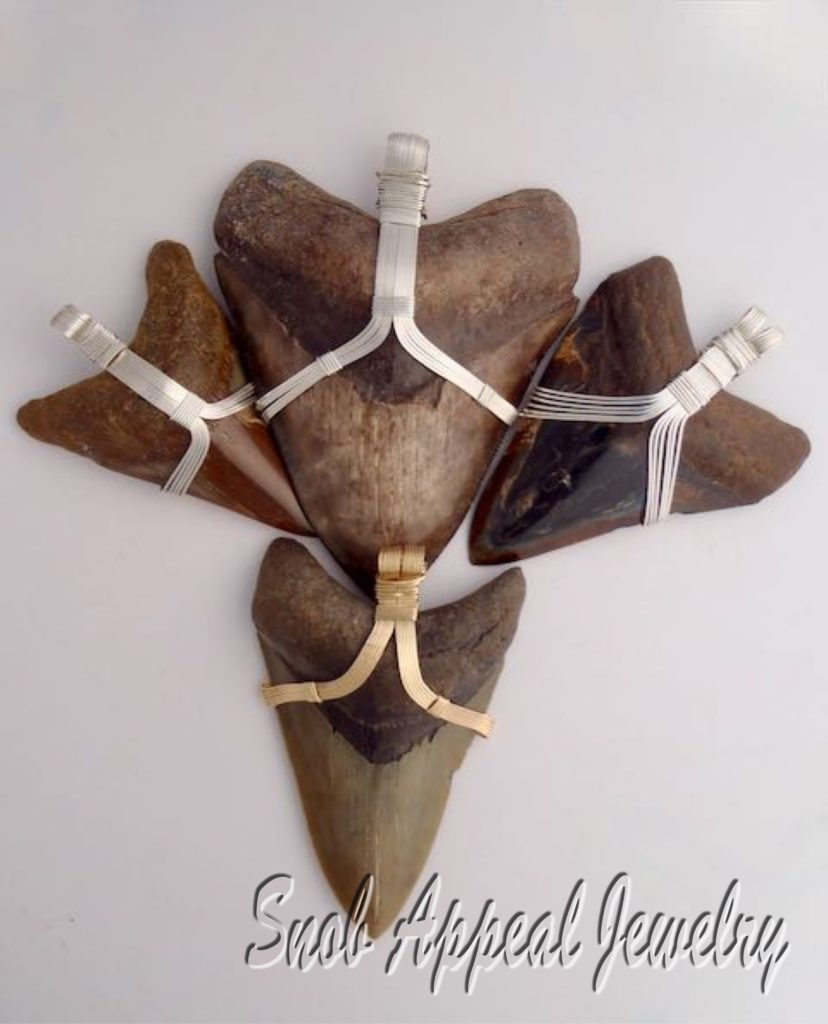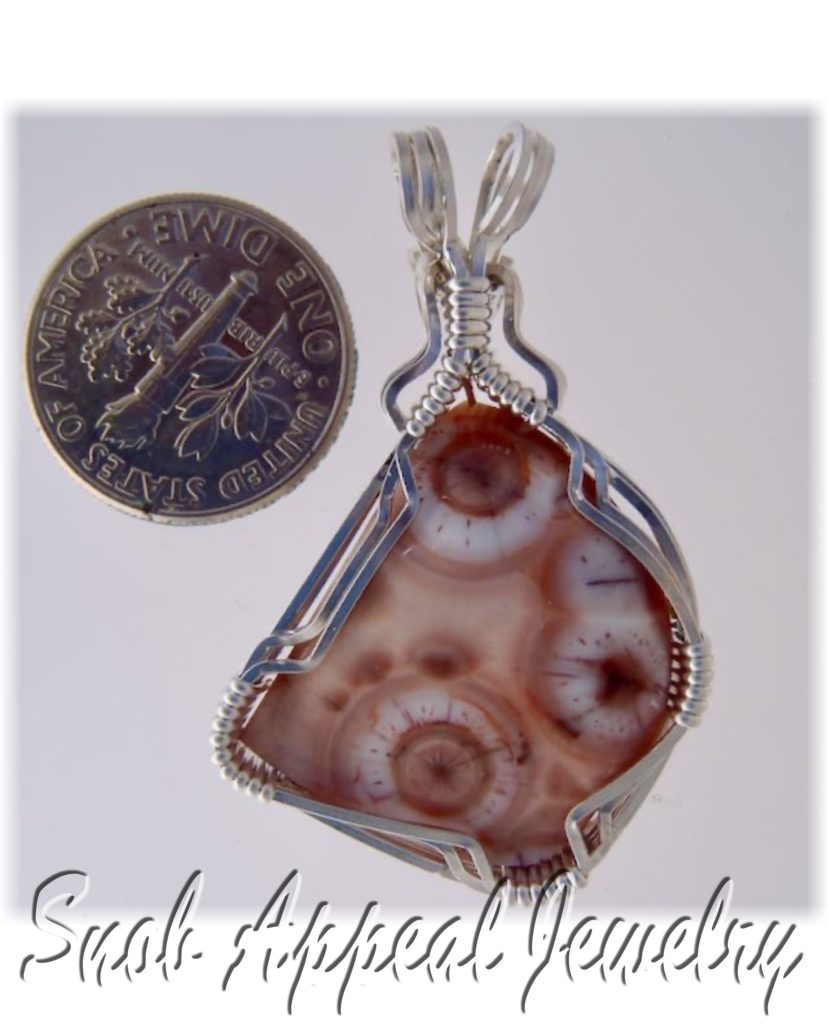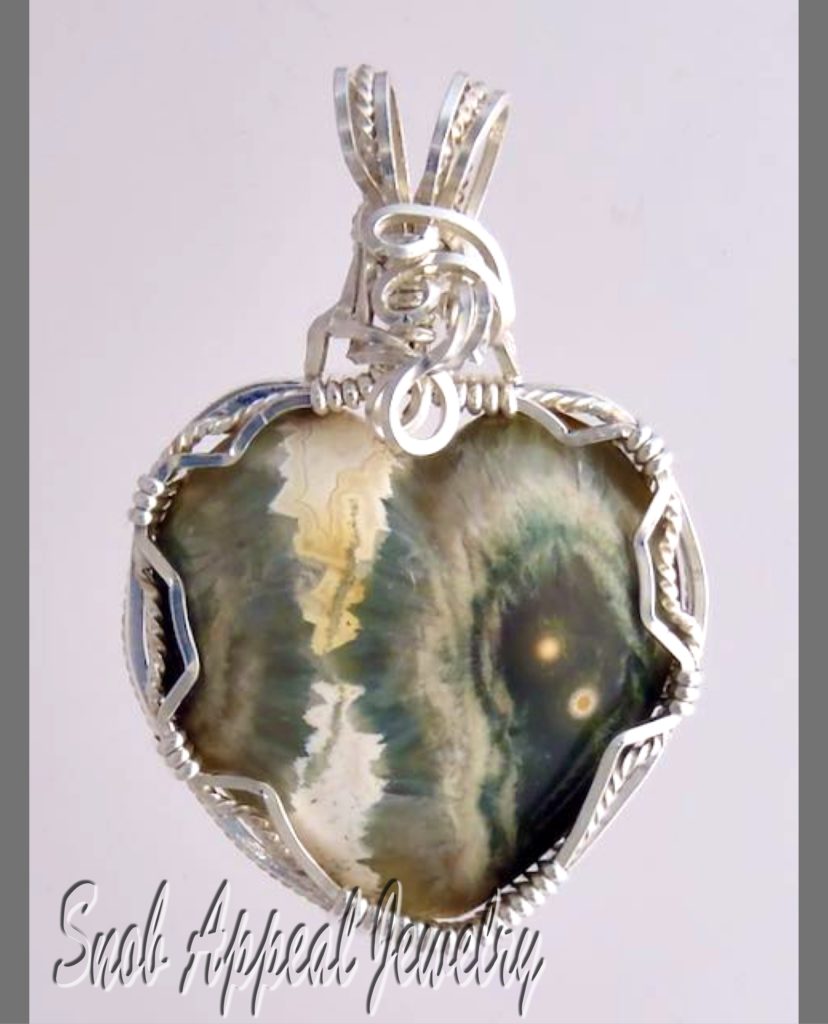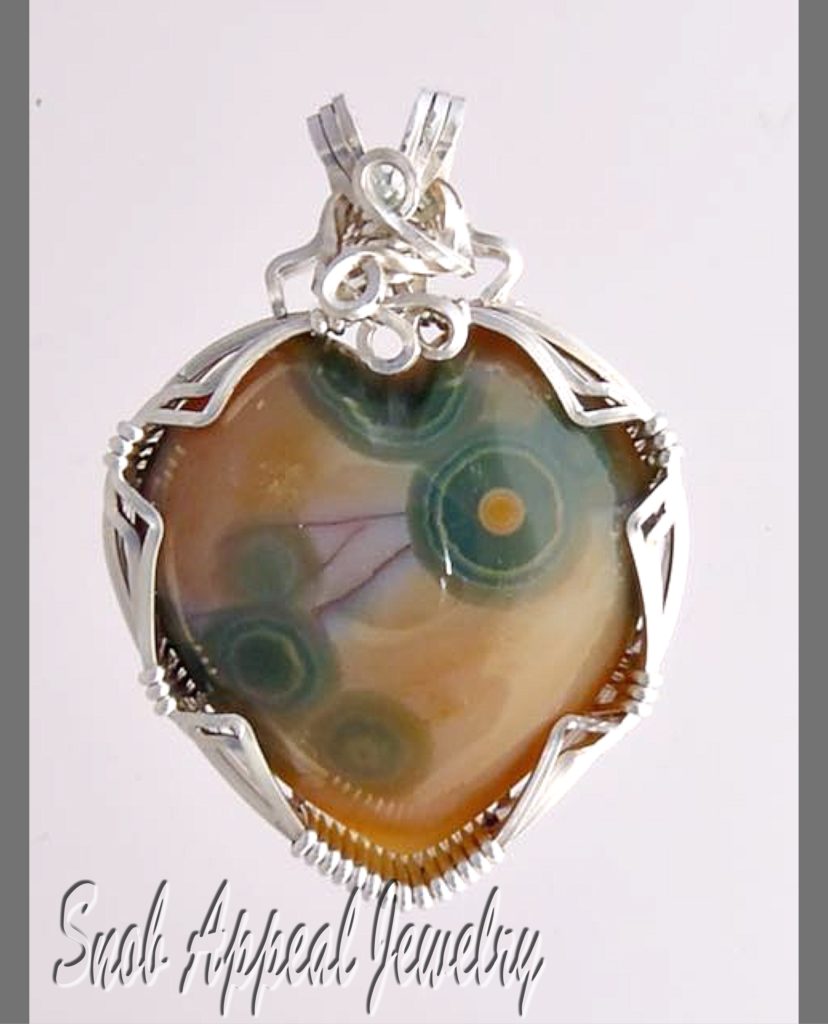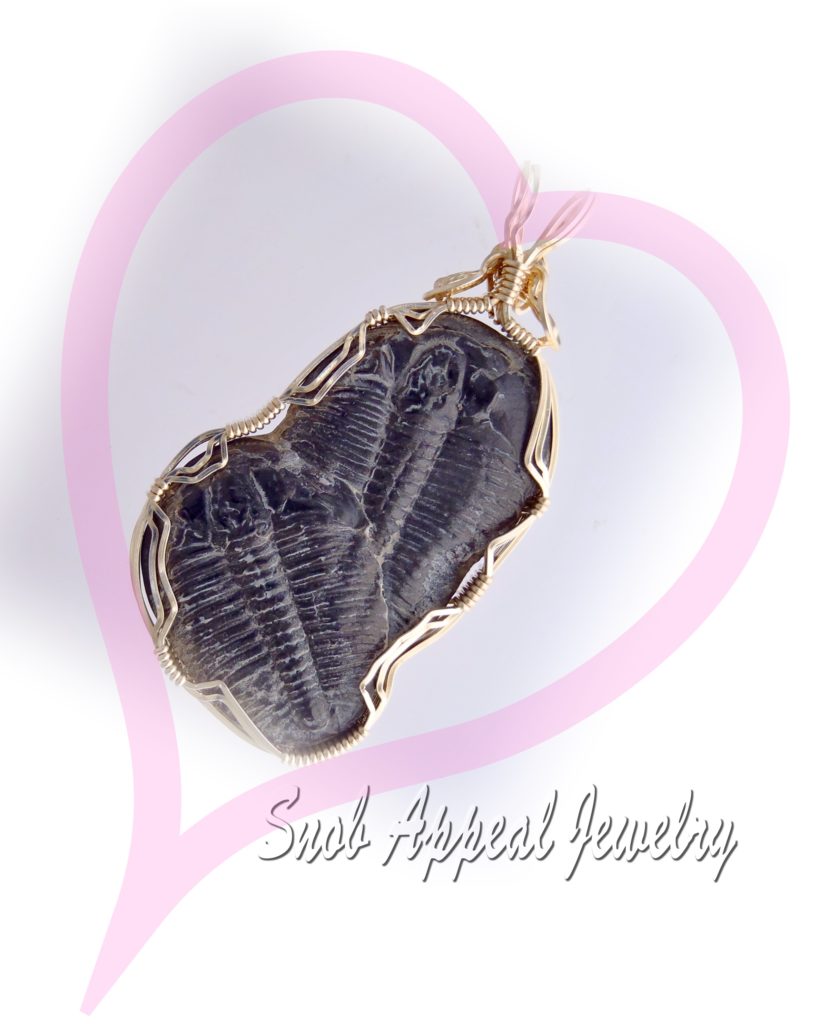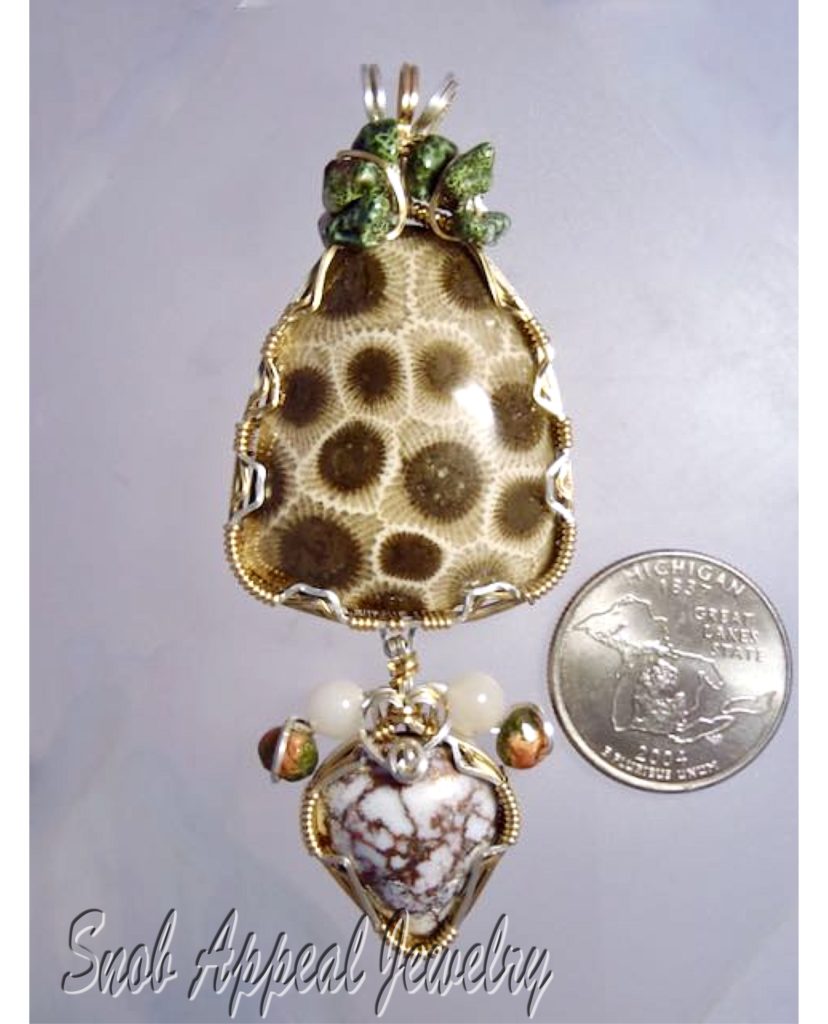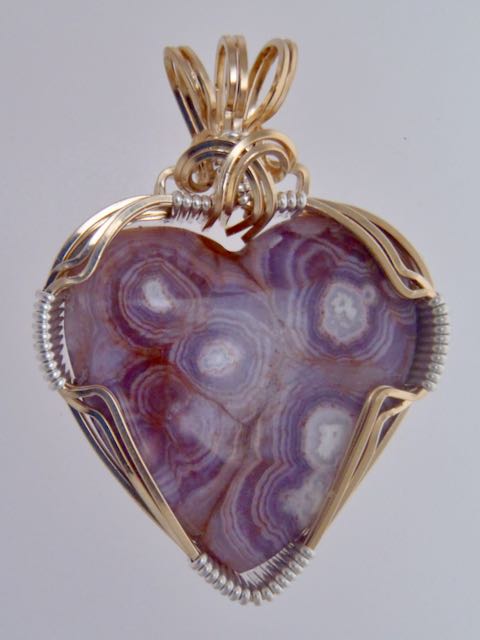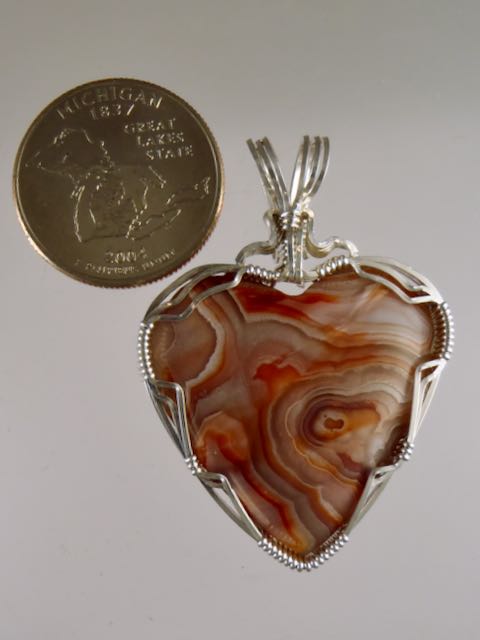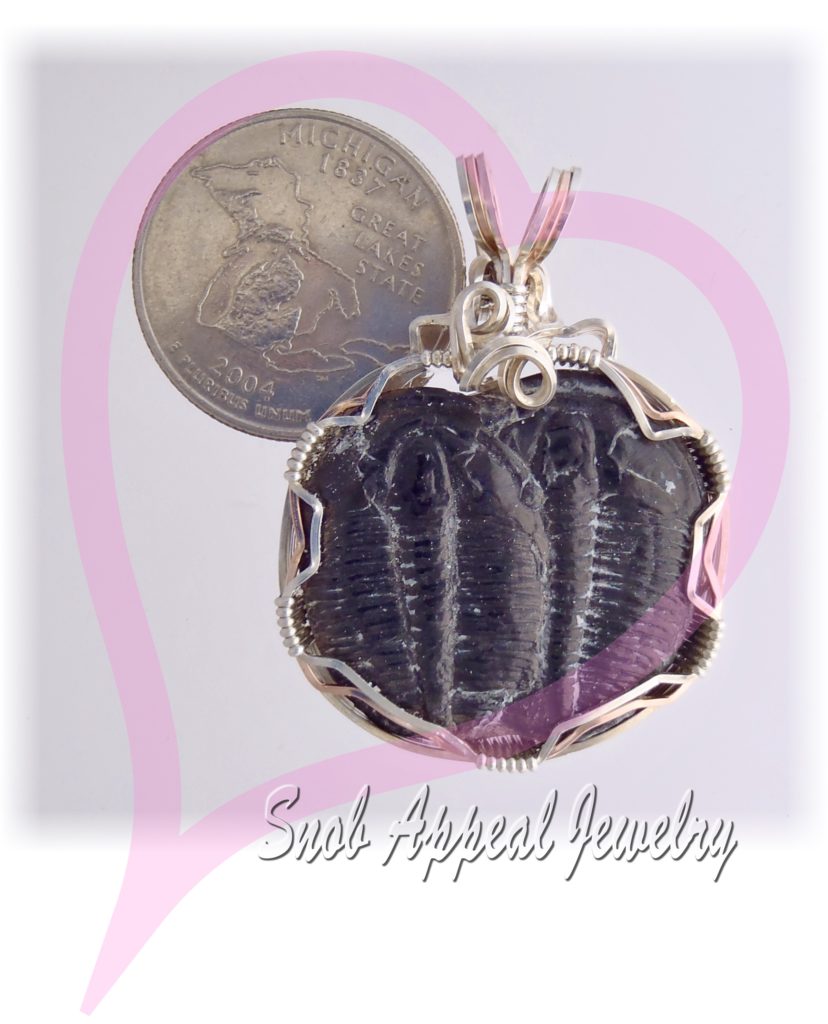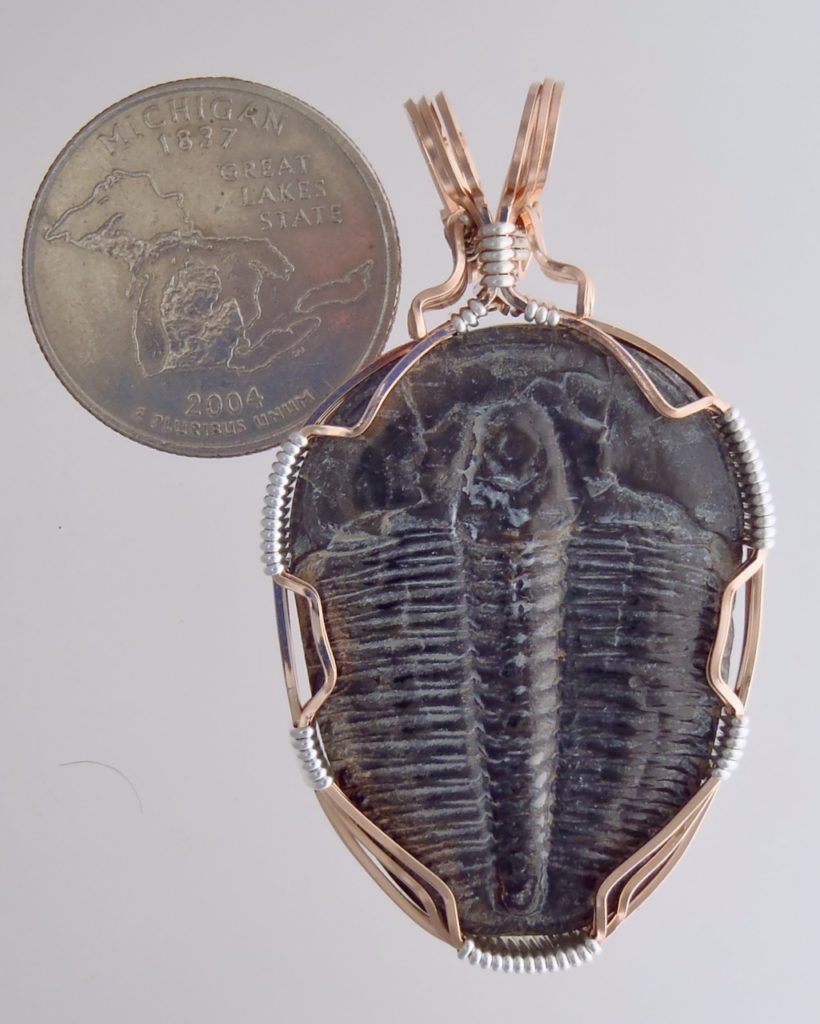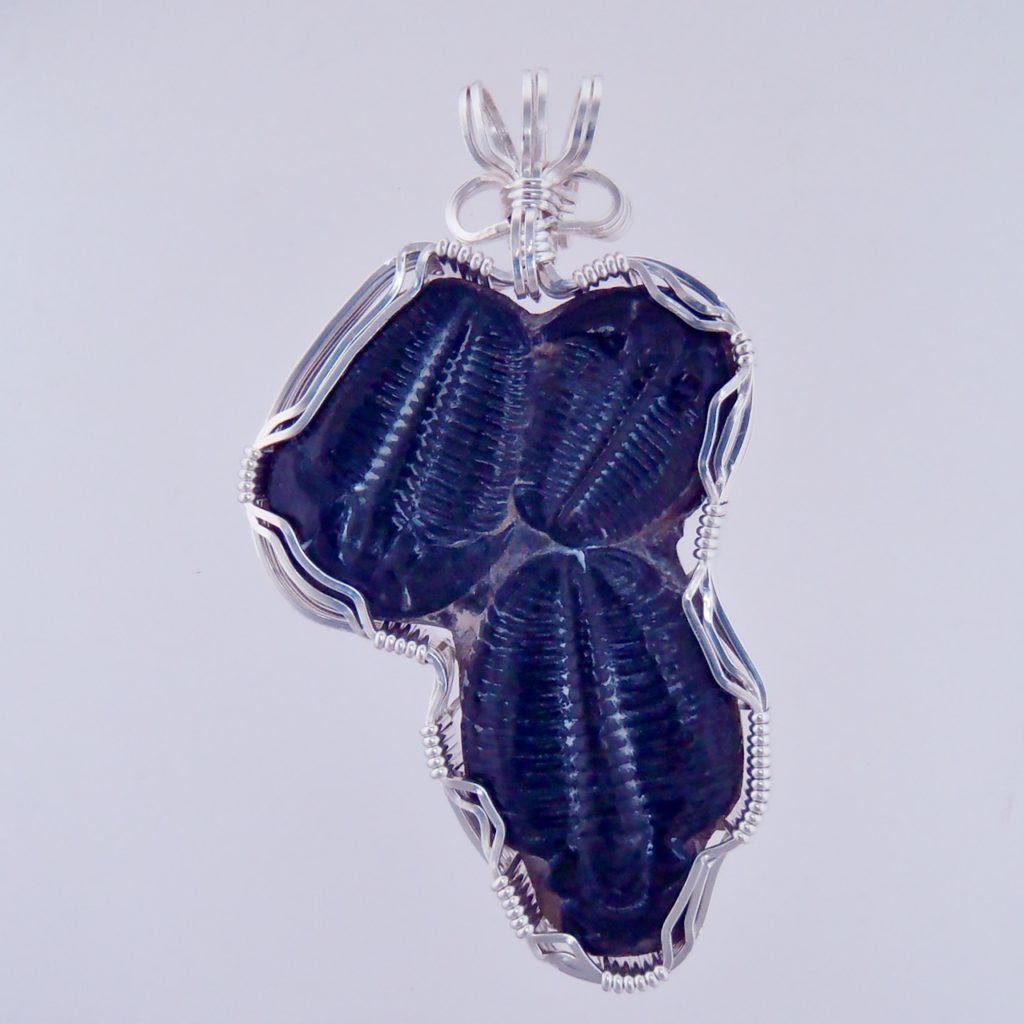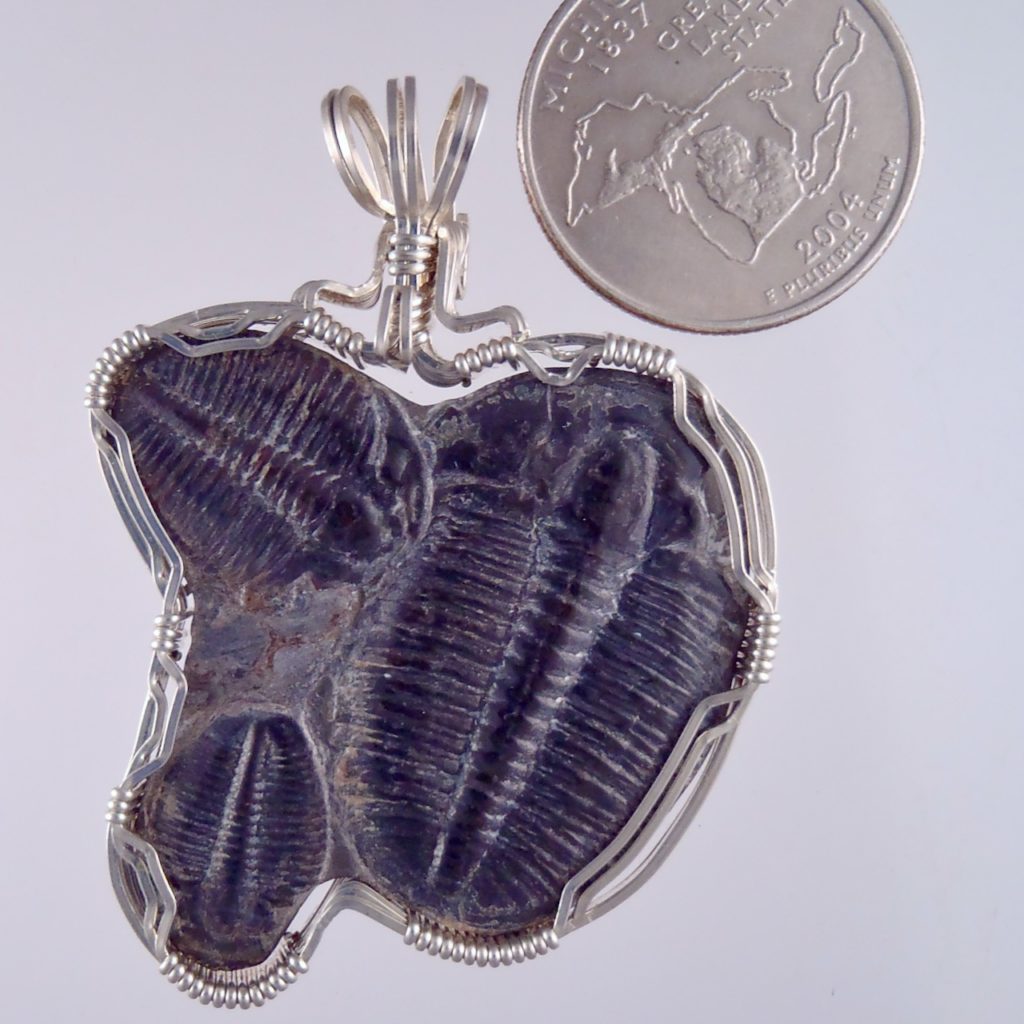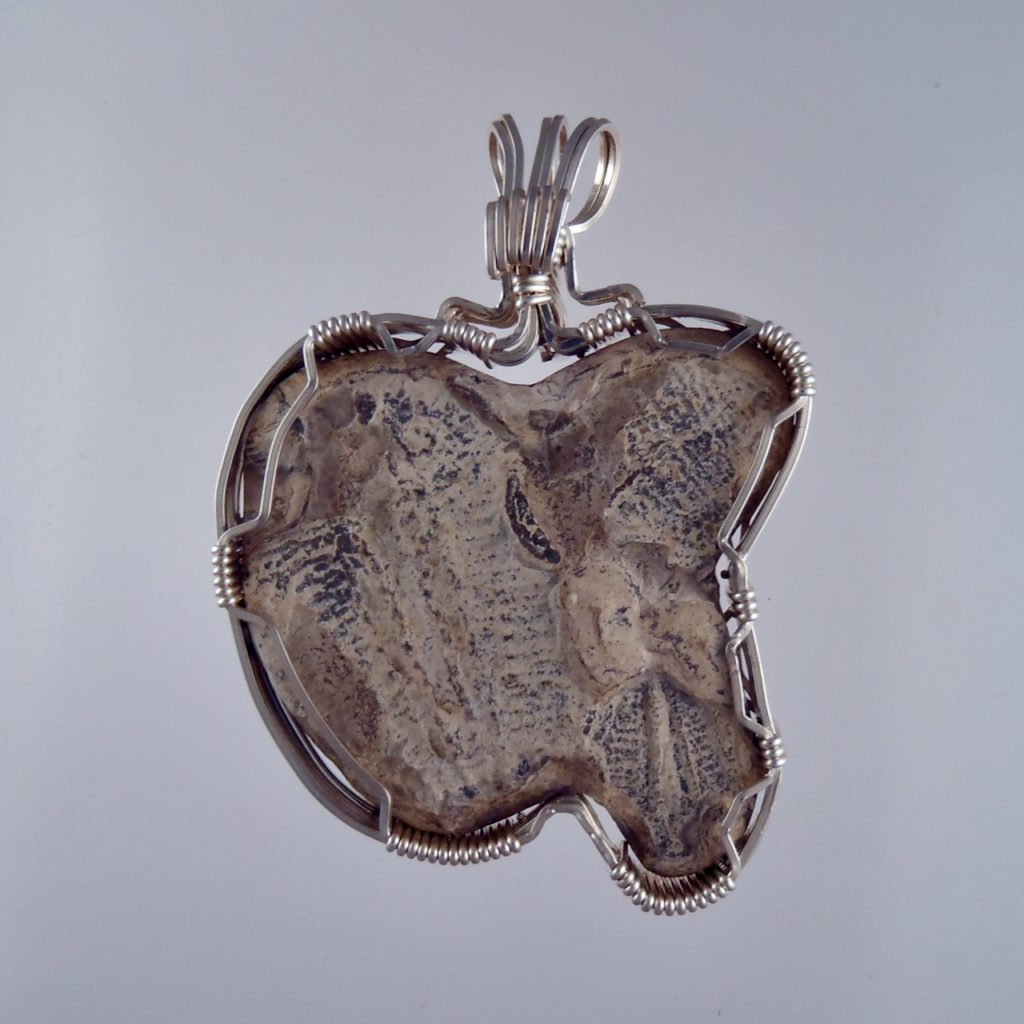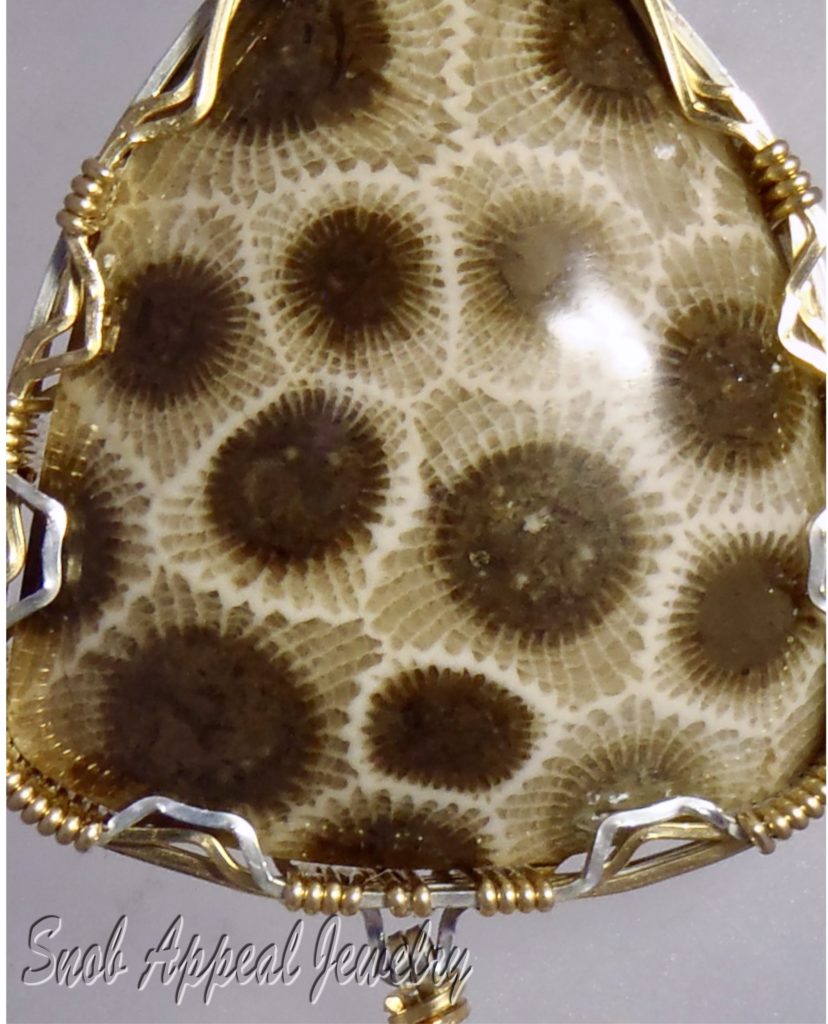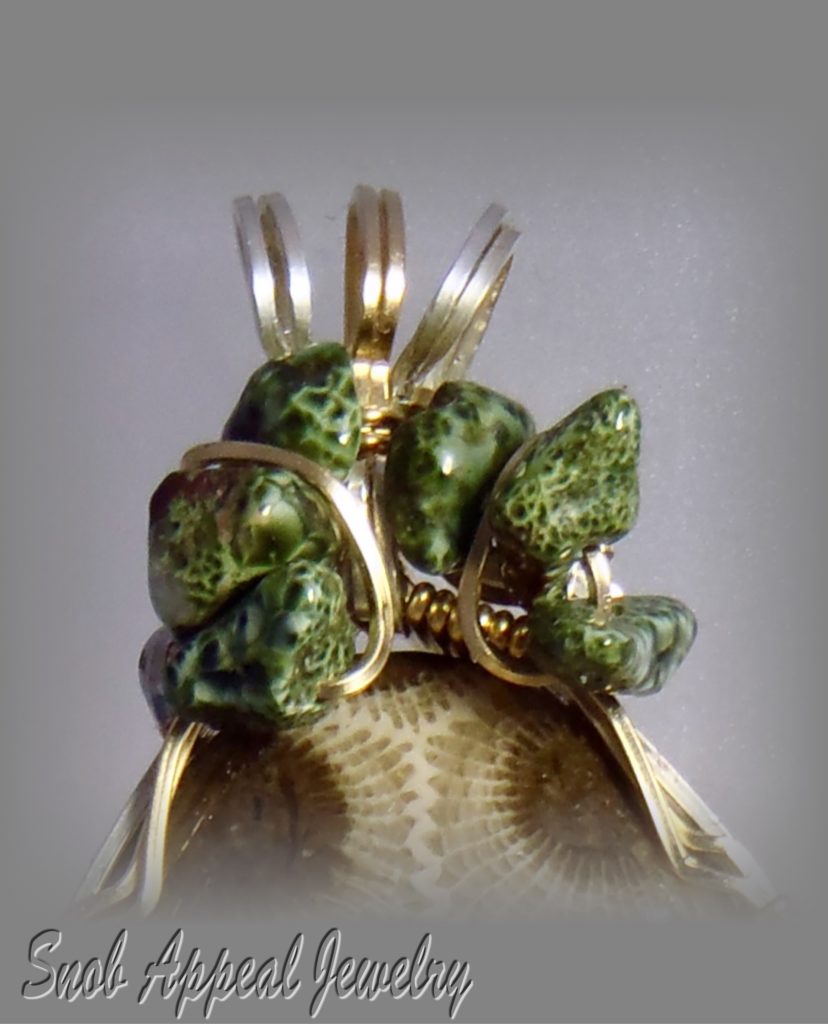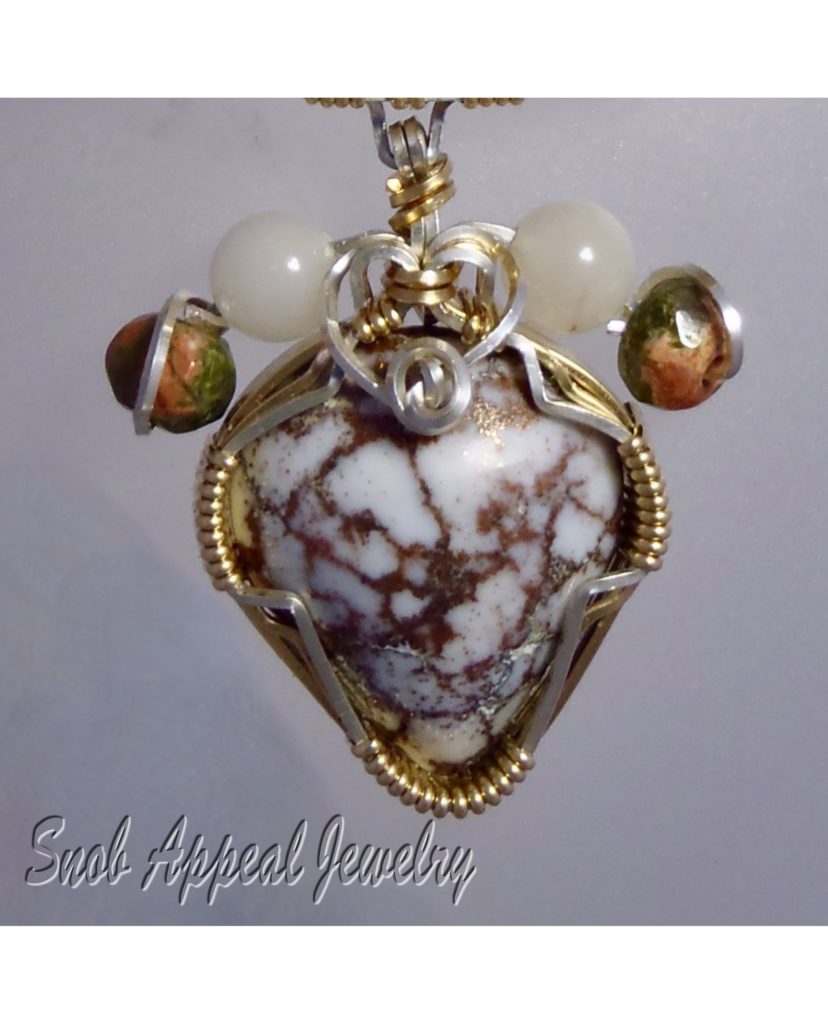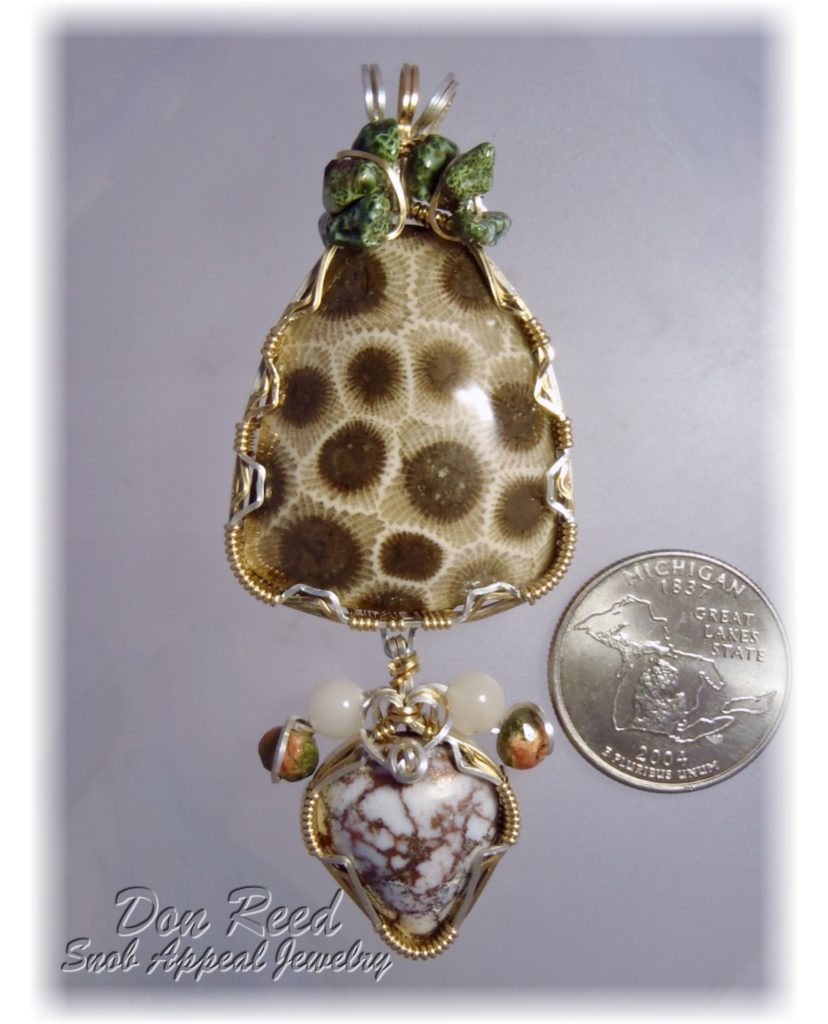Twelve New handmade pendants for the Twelve Days of Christmas. Appreciate the stones and the short stories of each one. This should make you smile.
The stone stories are worth reading, and may enhance your Holidays
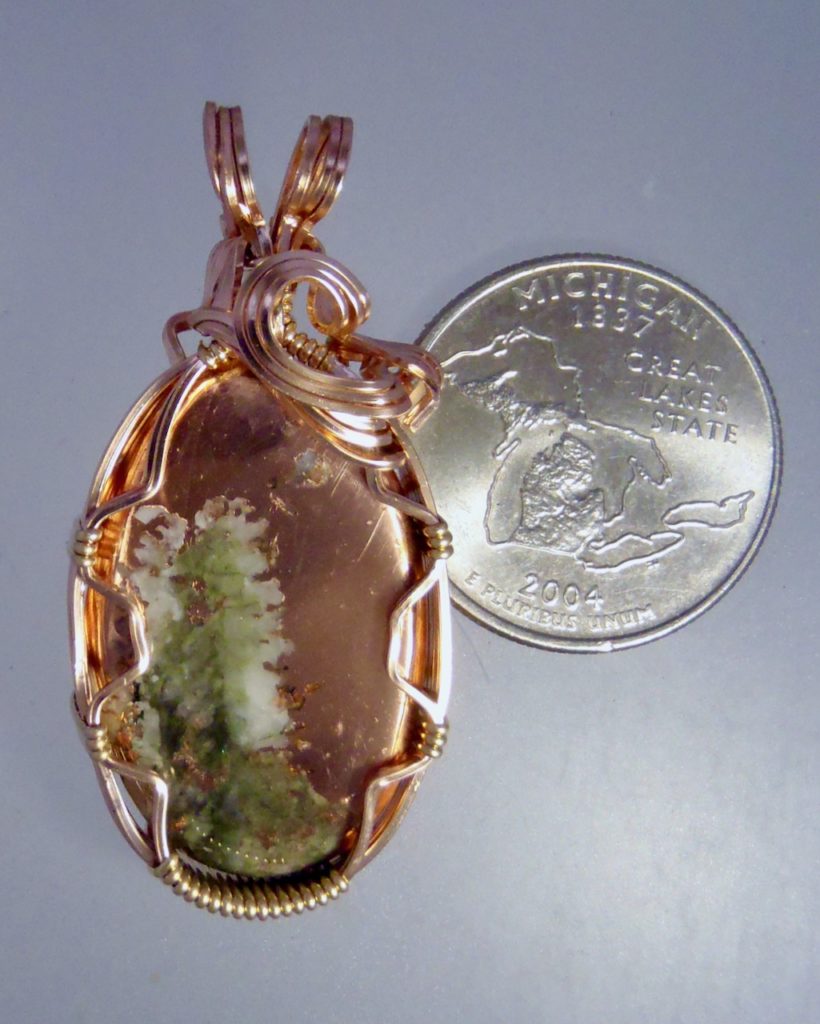
I would not refer to this as a Copper Agate. as there is a lack of banding. This stone is actually Copper, Prehnite, Epidote, Datolite, and Chlorite. The odd and unusual is what made us famous, and this fits our niche for sure.
We were camped in the Keweenaw near Lake Linden this summer, when Bonnie came in and said, “Look who’s just pulled into the campsite next to us”. They tuned out to be friends, from Wisconsin, that camp near us in a campground in Tucson many times, during the Tucson Gem & Mineral Shows. We’ve also hunted the rock spoil piles together in the Keweenaw. Small world.
I discovered that our friends had some old stock Cabochons for sale. This, as well as some Copper Agates, and Silver/Copper Nuggets (Half Breeds), got me excited. This was A fun time with old friends; small world.
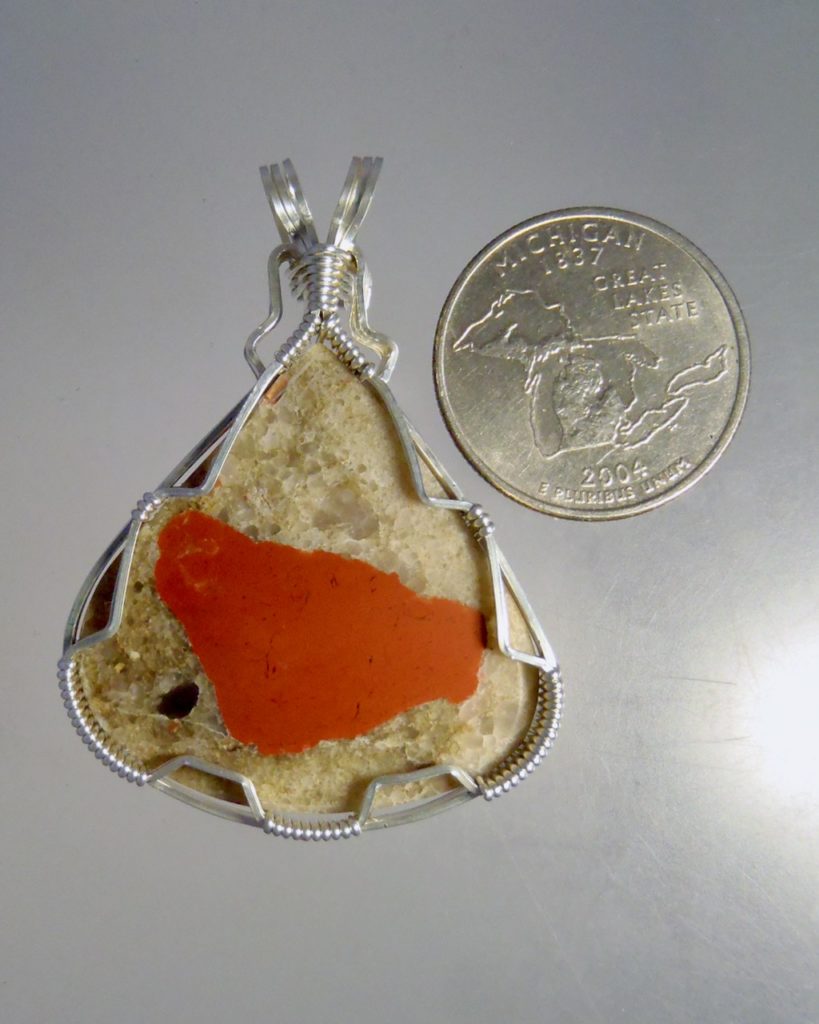
Pudding Stones are interesting; Quartzite containing other stones (especially Red Jasper) I’ve seen many other rocks in Pudding Stones. Lake Superior Agate, pieces of colored Quartz, Amethyst, and black Tourmaline. This special piece featured a larger that average piece of bright red Jasper. This Pudding Stone makes me smile whenever i gaze upon it. As a bit of trivia for you: Pudding Stones were glacially transported from their source near Sudbury, Canada. It’s fun to figure out how far they traveled. THE LAST PUDDING STONE I FOUND “SURFED” 326 MILES!!
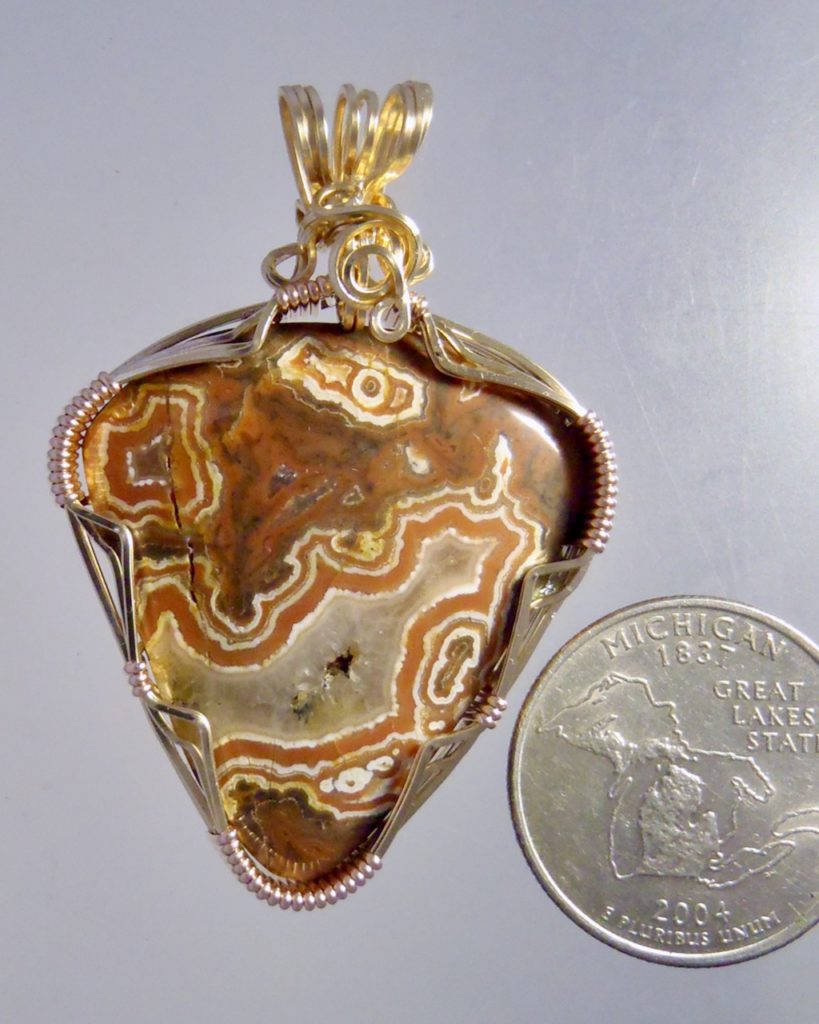
The best I recall, this happened back in 2000. I drove up to Thunder Bay on Lake Superior’s North Shore. I had very good luck digging Amethyst East of Thunder Bay.
A small sign along the road said “Thunder Bay Seam Agate”. What is this (?), I thought. I recall a small retail building, where Seam Agate could be purchased, along with jewelry and baubles. People could also go seach the trenched area, and pick up whatever they wanted to purchase. There was a dirt covered employee working hard on breaking up and cutting, larger pieces for the store to sell. I saw one beautiful large, crystal and agate infested chunk of Seam Agate that the worker was ready to break up. This piece would have been around 40 pounds. Was this a good deal, or a bad deal? I offered him some American Cash and threw the rock in the back of my Dakota.
After i left, I thought; was the minion suppose to sell me that rock? (or did he just need some American cash?) I did not know; or care, at the time. I think any statute of limitation has long since passed..
Research on “Seam Agate” later revealed that this deposit was exhumed when they were building a new road in the area. Someone purchased the property and opened the mine. I believe that the agate seam flowed all the way down to lake Superior, maybe a mile away. The area all the way down to the beach was all filled with housing and that property that the Seam Agate Mine was on, was probably no more than an acre of two.
Eventually after maybe three years that Lode played out, there was some financial situation, and no other areas that could be searched. The mine closed up.
I still have a large piece of Seam Agate, and this stuff is very scarce to find and pricey to buy; so I guess I did make a good deal. Being at the right place at the right time often pays off.
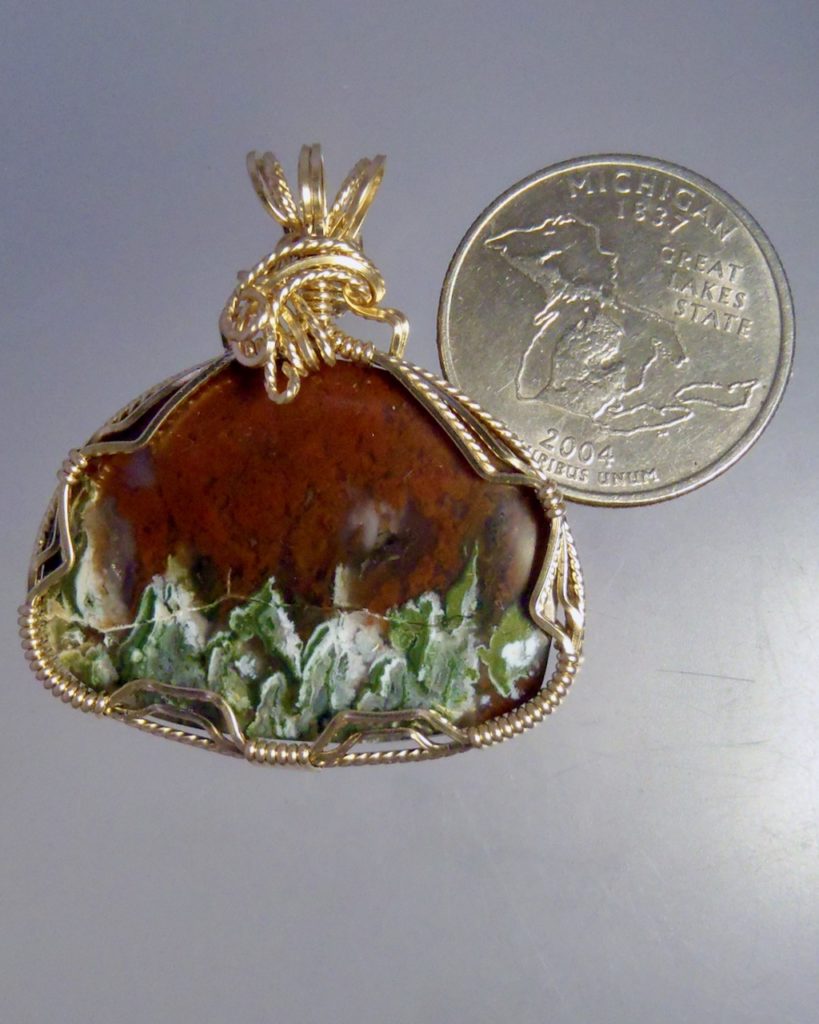
Garden Agate from the island of Java in Indonesia, is a beautiful Moss Agate. This piece was located in a Gaylord box in Quartzite; way at the bottom. Back in the day rooting through these big boxes was fun. Today, I would never be wrecking my body “Dumpster Diving”.
The background is bright dark red moss agate which allows the green crystals to stand out. Do they look like snow covered pines?
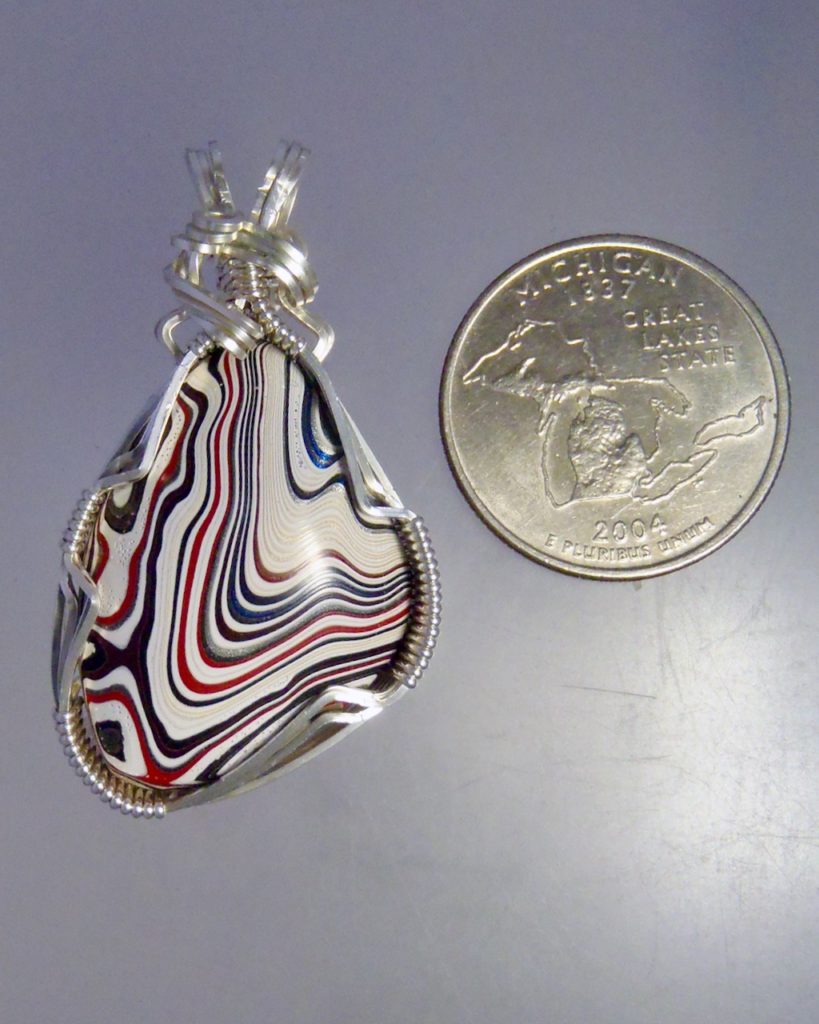
“Fordite” is a generic name for oversprayed paint. Sometimes a close search on line, looking at old paint color charts may give a hint as to what the paint was used for. I am not sure about the vehicle, boat, or toy, this paint was used on. It is bright, quite metallic, and patriotic colors. Makes me want to salute. As a word of caution; Much Fordite is manufactured in China, or other countries, nowdays.
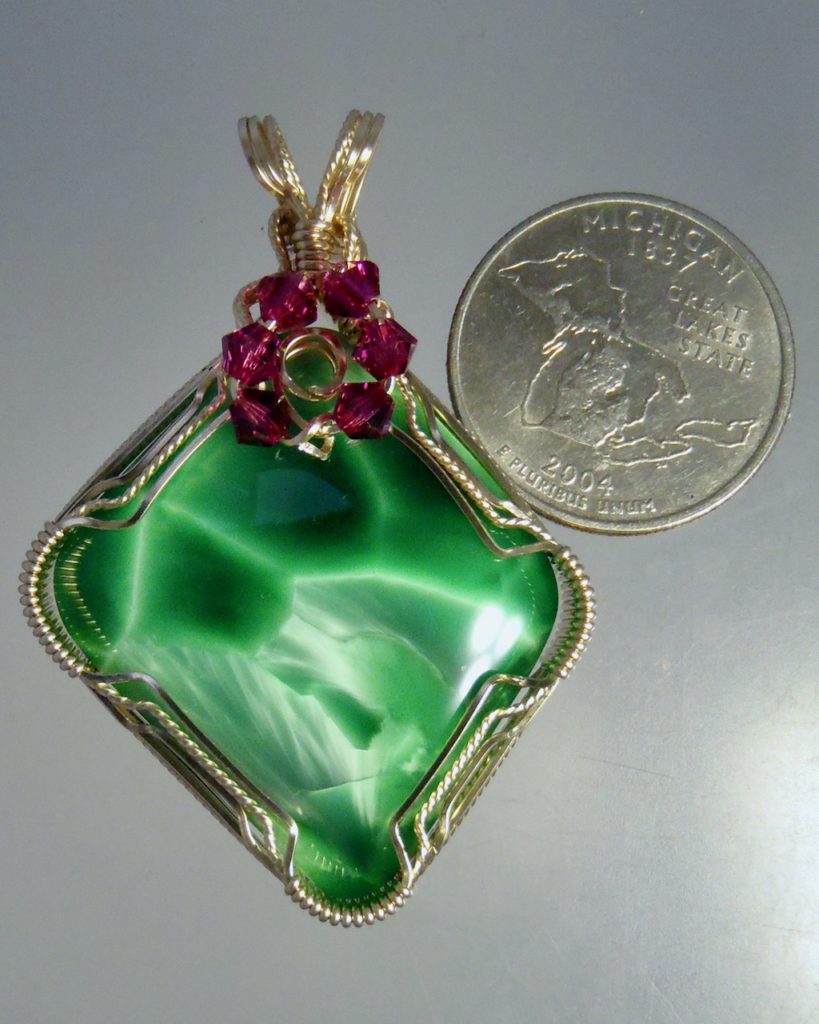
It was fortunate I started purchasing Victoria Stone, when I could find it back then. Now the original Victoria Stone is very scarce, but there are a few simulates out there, (but none as spectacular as the original).
I have a fair supply of Victoria Stone, but am bombarded by other collectors to sell some of my stash, which I don’t often do.
You will find many brightly colored Victoria Stone pendants on our website.
Very recently I was looking over one of my Victoria Stone cabs, and one spectacular bright green beauty called to me. Dark Green and Light Blue were always the most popular colors in Victoria Stone.
I held onto it until the joys of Christmas, this year, convinced me to create one of the finest festive Victoria Stone Pendants I’ve ever created. I often have dreams of jewelry I should make, and this was pendant was made when I awoke with the idea at 2am. My jewelry dreams are usually very detailed, except I had to see if Bonnie brought along the beads I needed to create this masterpiece. Not wanting to awaken a sleeping bear, I waited until later in the day. Fortunately she had something that would work.
I wanted to design something that could be worn at Christmas, but also during the rest of the year, as a floral wreath. Bonnie has worn the pendant several times this holiday season, and everyone seems to love it.
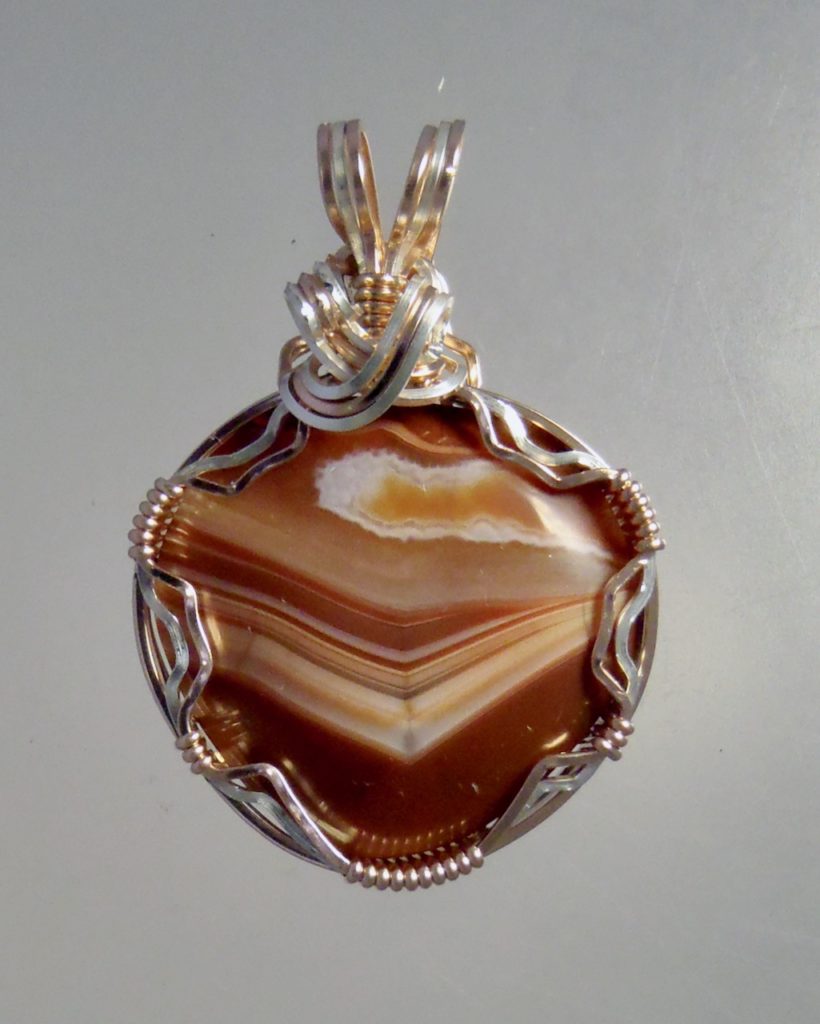
Everyone that knows me well, knows that Lake Superior Agates are my very favorite Gemstones to make jewelry with. I have a friend that owns a cemetery in Minnesota. He has a large parcel of property in an urban area. On that property is a “Reverse” gravel pit. What is that, you are probably asking? Construction types pay him to dump stones on his property; roof ballast, landscape rock, and gravel. This is his private gravel pit. He allows us to hunt there for Lakers. Guess what else? Whenever a construction person needs gravel or rocks, he sells them what people have paid him to dump on his property. He makes money both ways. How awesome is that? I found this stone on that property.
What makes this Laker unique is a couple things. First, it contains yellow (somewhat scarce in Lakers). The Agate is also a partial “Shadow Agate”‘ as well as a picture agate. The agate was crack free, and took a glass-like polish. It’s about a Quarter size.
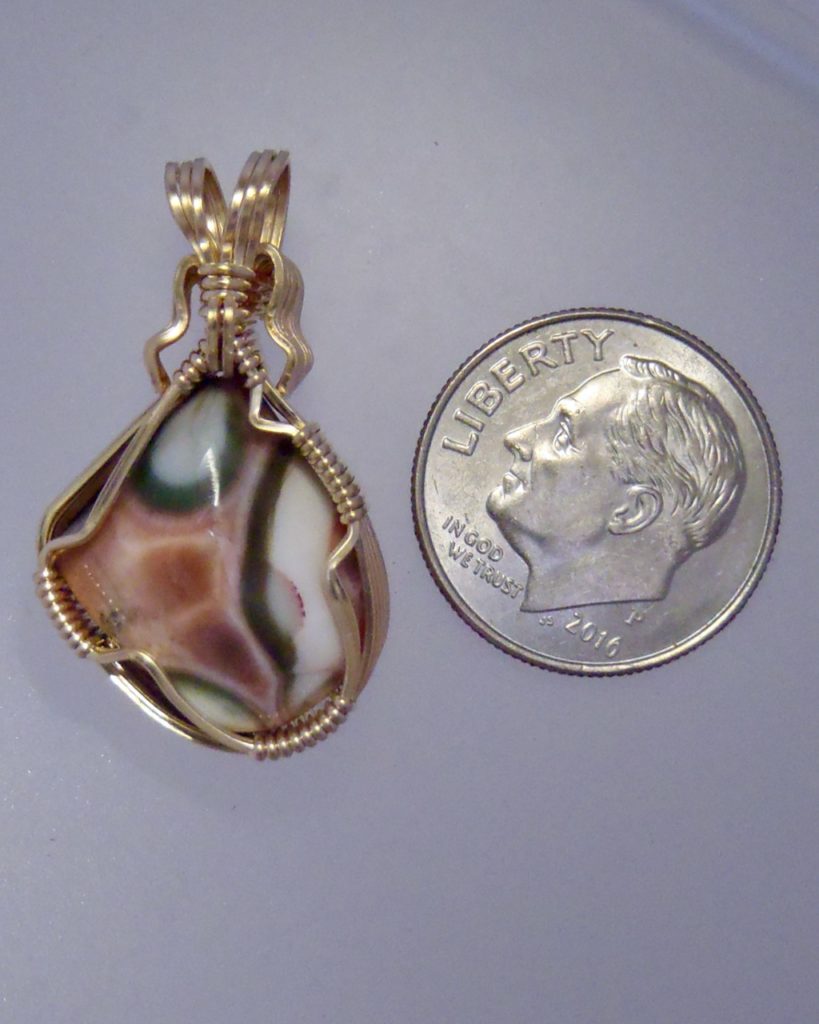
On a Lake Superior Circle Tour in our RV we stopped at an RV park in Gran Marias. We saw one of the churches in town was putting on a breakfast to raise money. A random conversation with another man at our table, revealed an adventure may be in store.
He noticed Bonnie was wearing a Thomsonite and he admitted he lived on Thomsonite beach. He said we could look for Thomsonite on the beach, but he would have to go with us, to ward off other beach residents. A short search produced several nice Thomsonite pieces. This gentleman was quite old, so we returned to his house , after a short beach hunt. I looked at some rocks he had found, and I do not recall if i bought any or not, but this was a wonderful unexpected adventure.
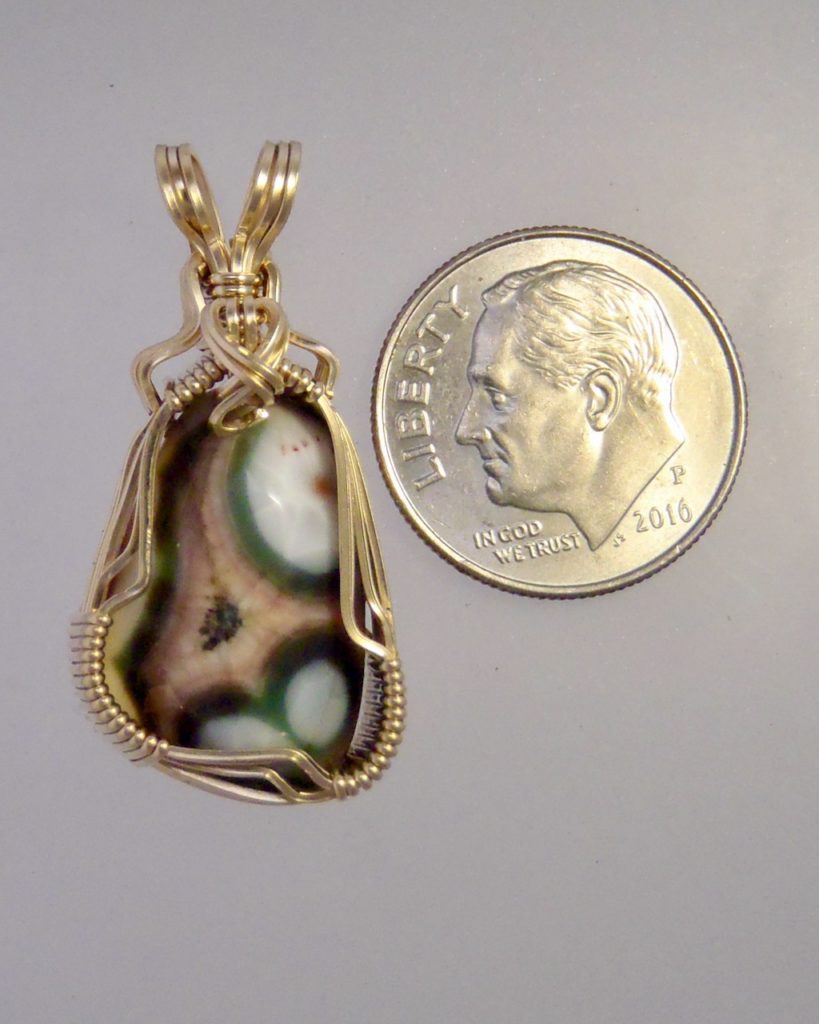
Another dark Eyed Thomsonite from the North Shore. This one I purchase from an individual that owned property covered with Thomsonite-filled Amigdaloidal Basalt. Thomsonite is very brittle and difficult to extract from its’ host. It is also VERY sensitive to harmonic vibrations and heat. The wheels on my Genie have to be true, broken in, and lots of water emitted on them
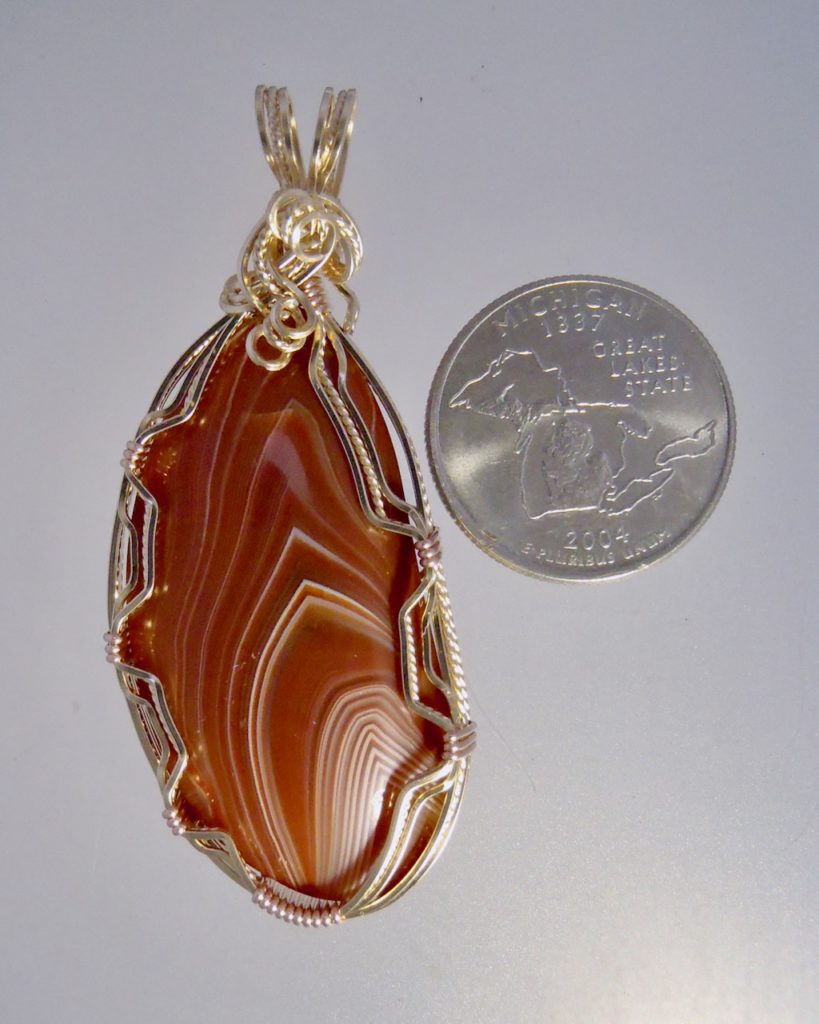
Perfect “Candy Striped’ Lakers are classic. These are THE Laker everyone immediately associates with a Lake Superior Agate. I swapped some jewelry for this Agate.
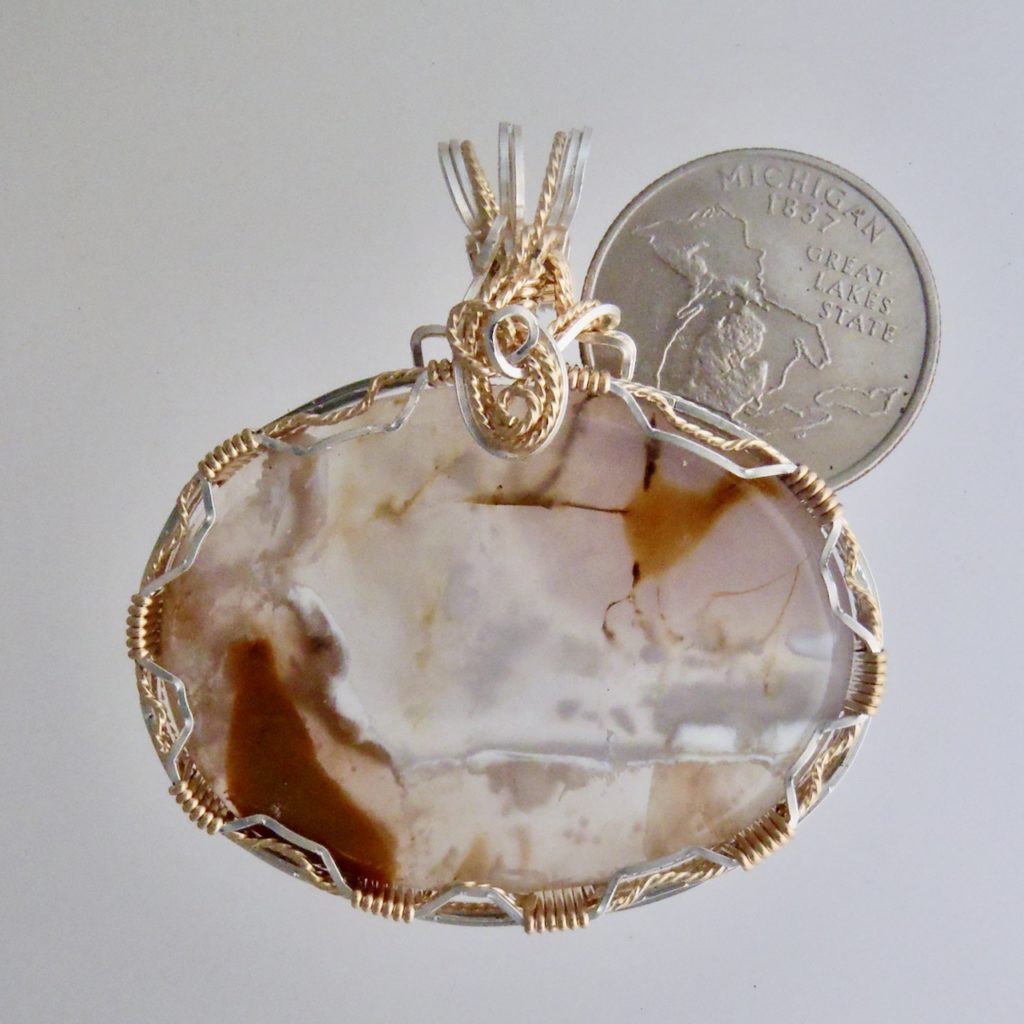
You can invent any number of stories about this beautiful piece of Jasper/Agate.
My story starts with a snowy day far in the north. Because of the icy conditions, no matter the weather, a trip out to find food, firewood, or use the outhouse is risky.
You really do not want to stray too far out on the icy glacier.
For whatever reason you go abroad, it’s aways nice to get back to shelter. It almost looks like a wizard with a pointed hat headed back home,.
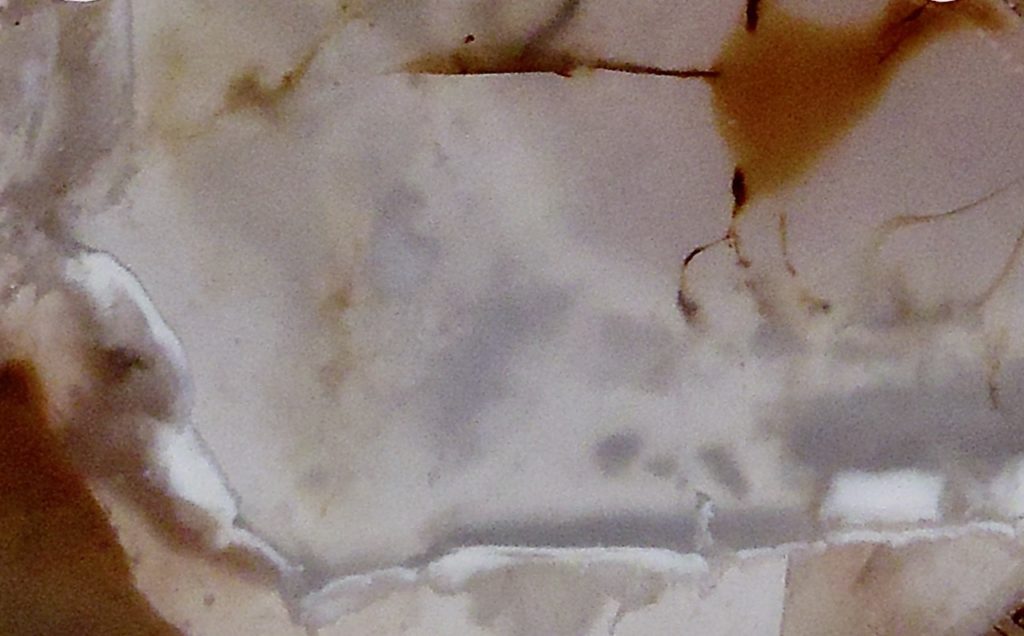
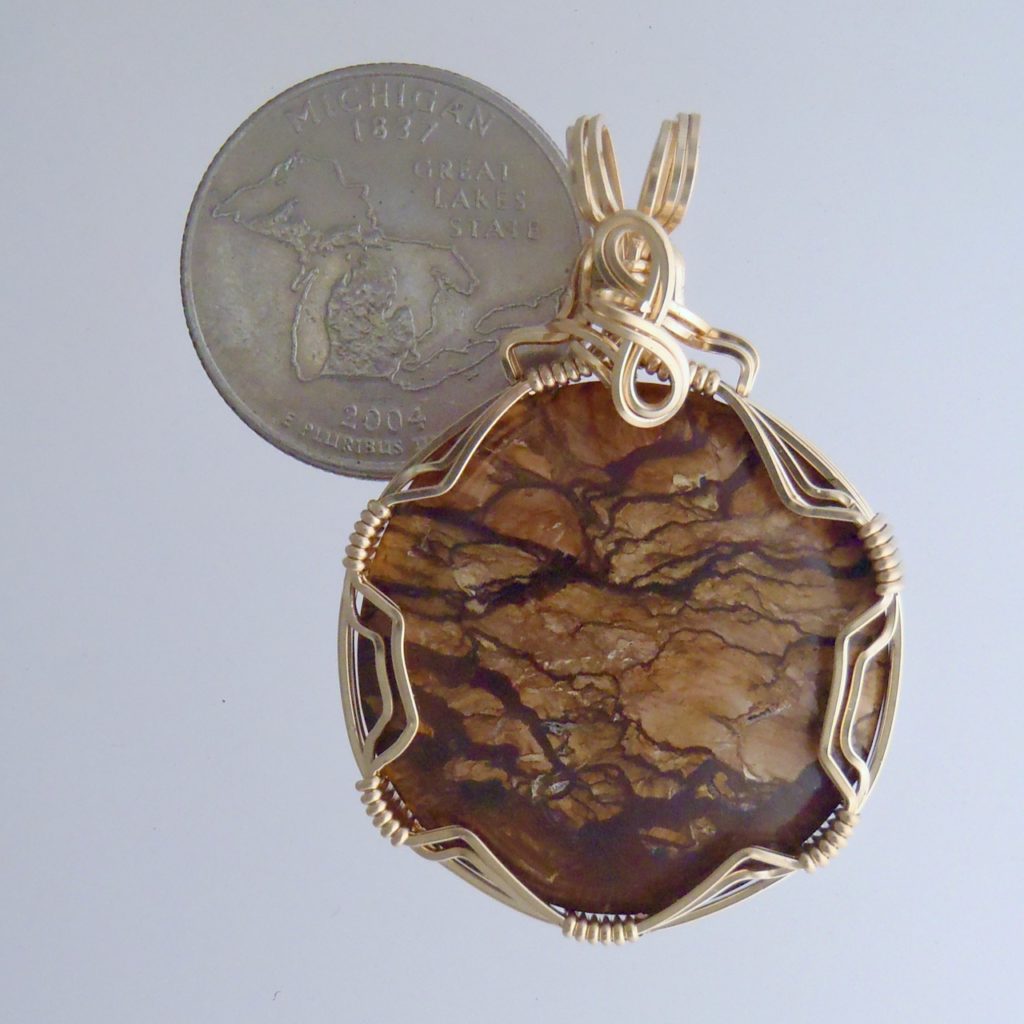
Imagine the devastating forces, it might look like a science fiction movie scene.
The real creation of this is much simpler; Picture Jasper is a type of jasper that forms from mud that drips into gas pockets in molten lava.
Links have been connected to the pictures of the stones that we have for sale on line. Click on any picture to see if it is “linked”.








